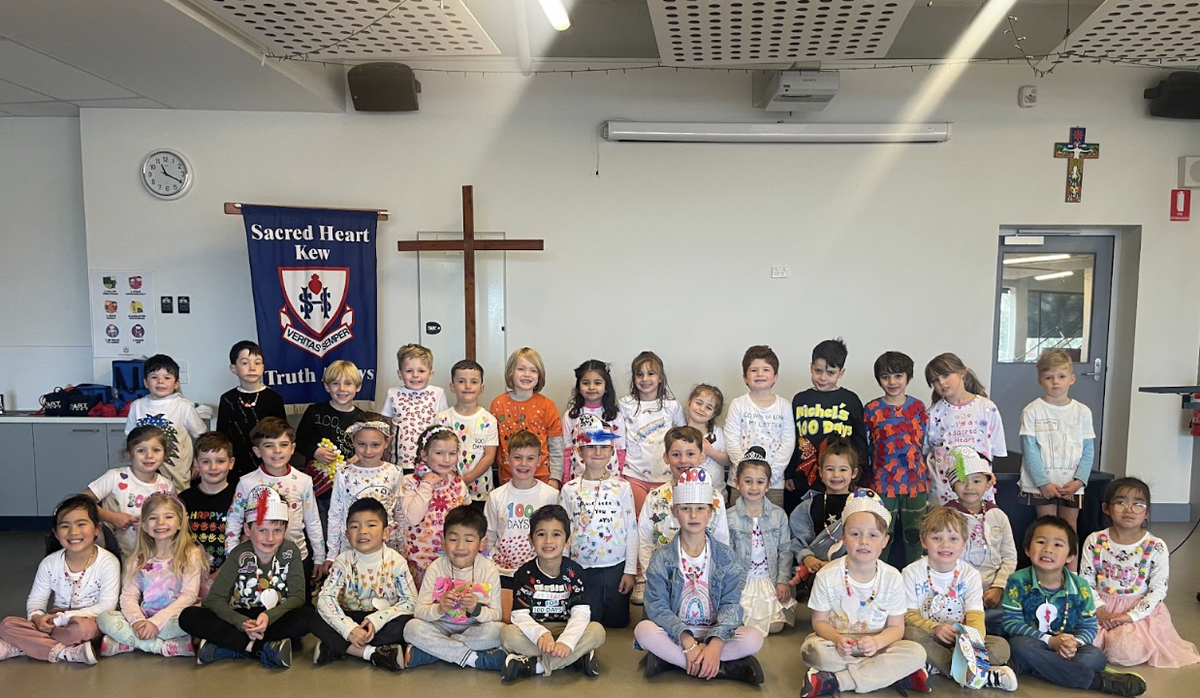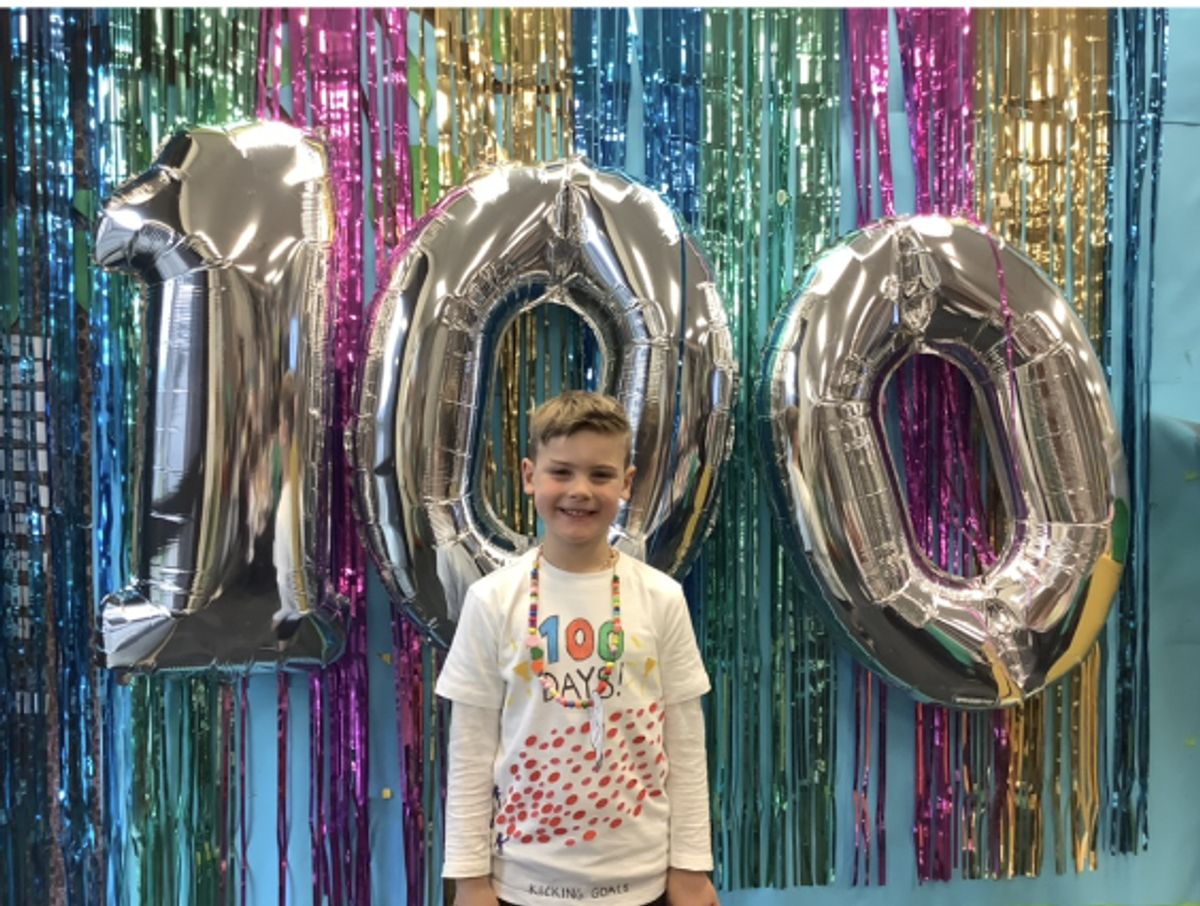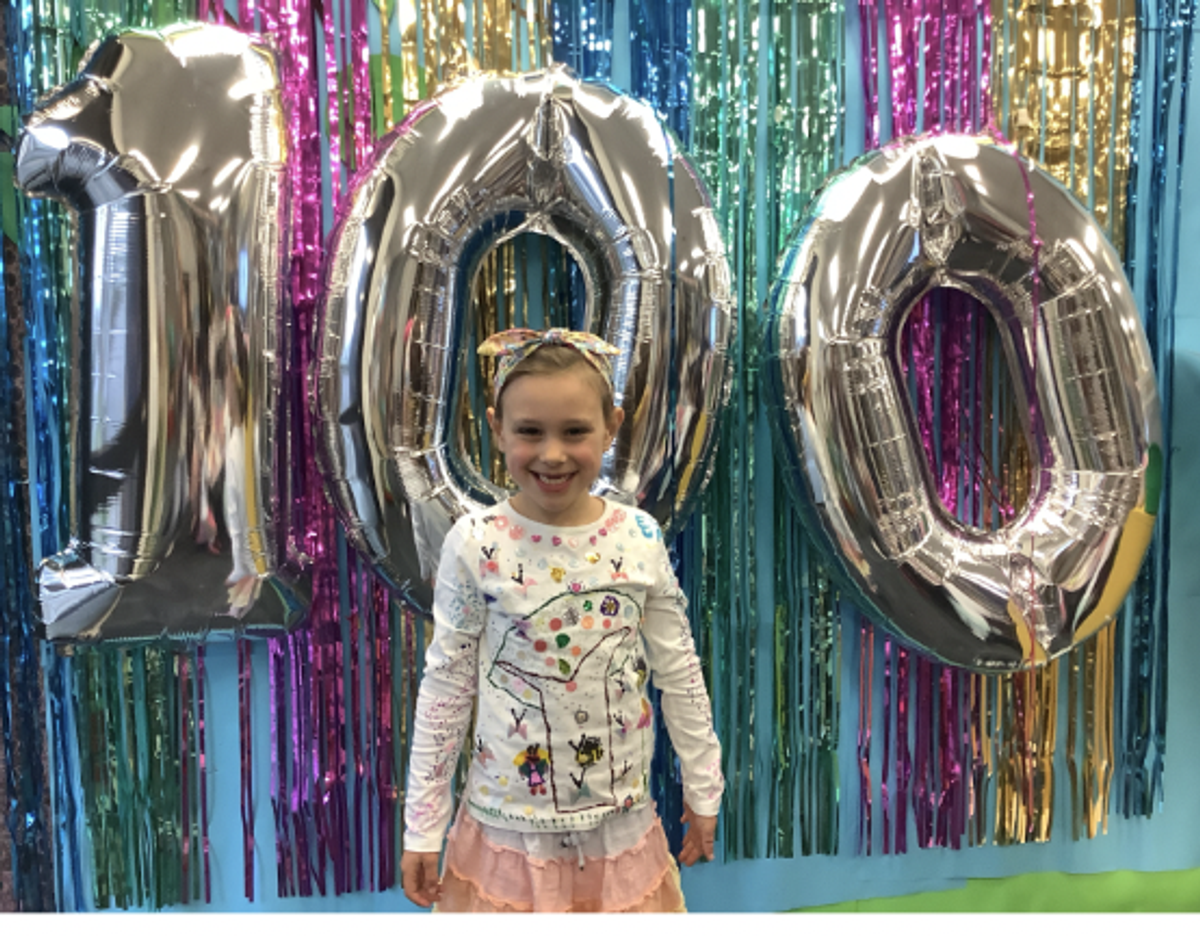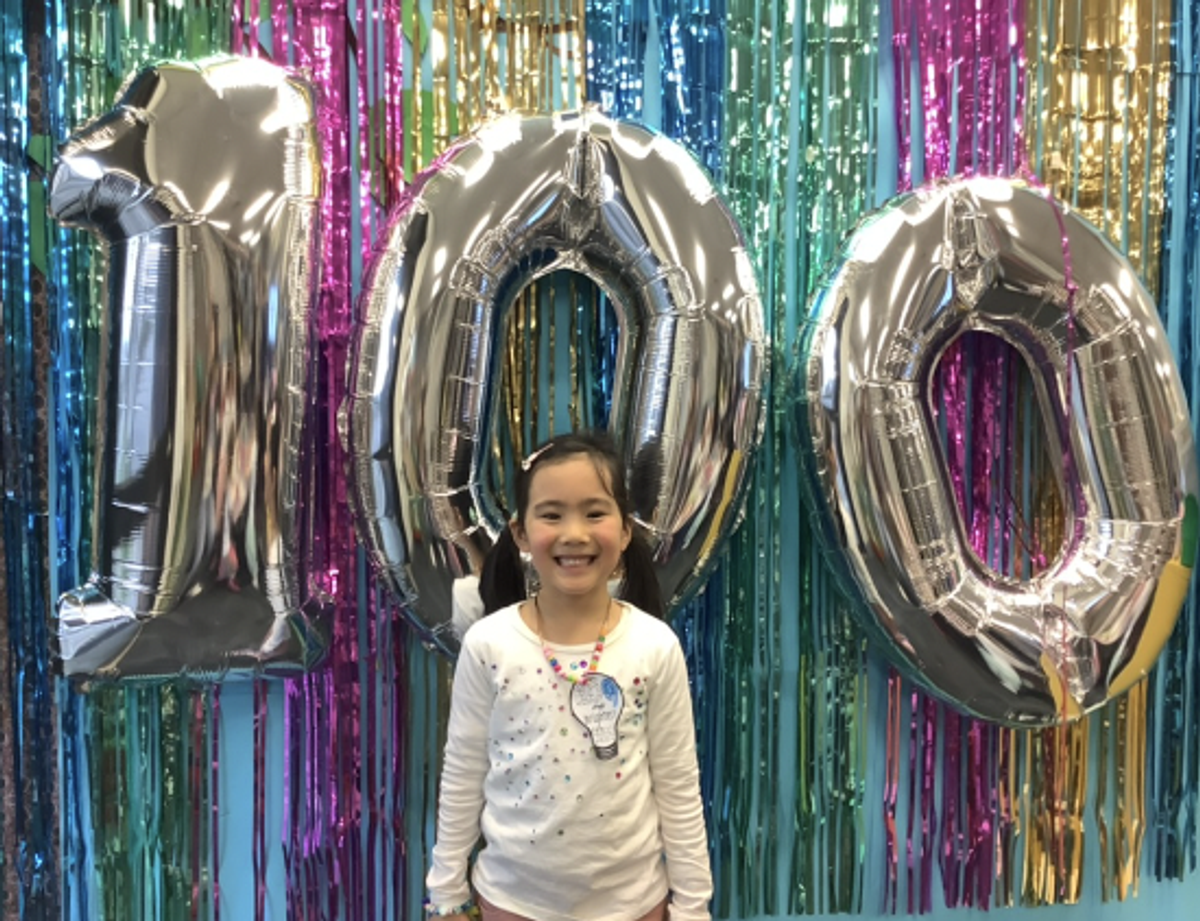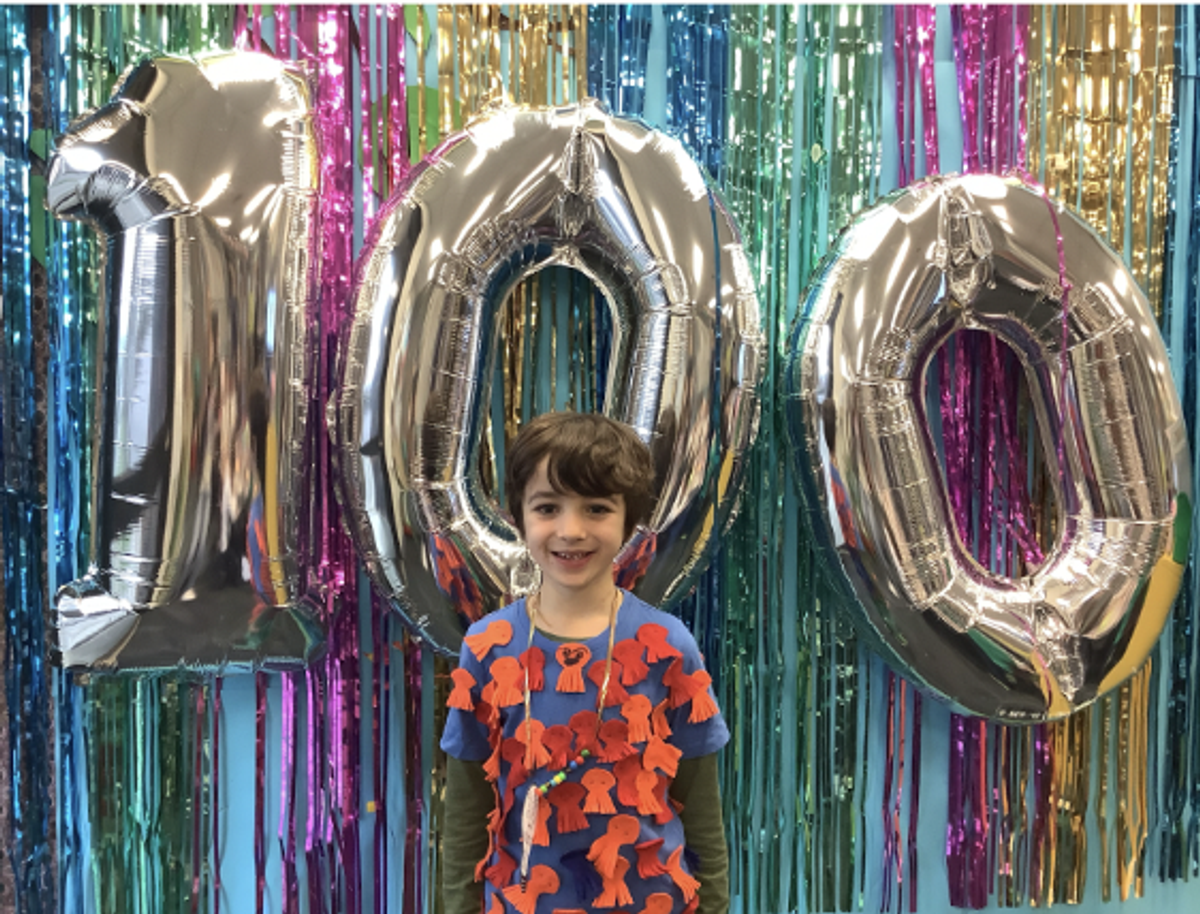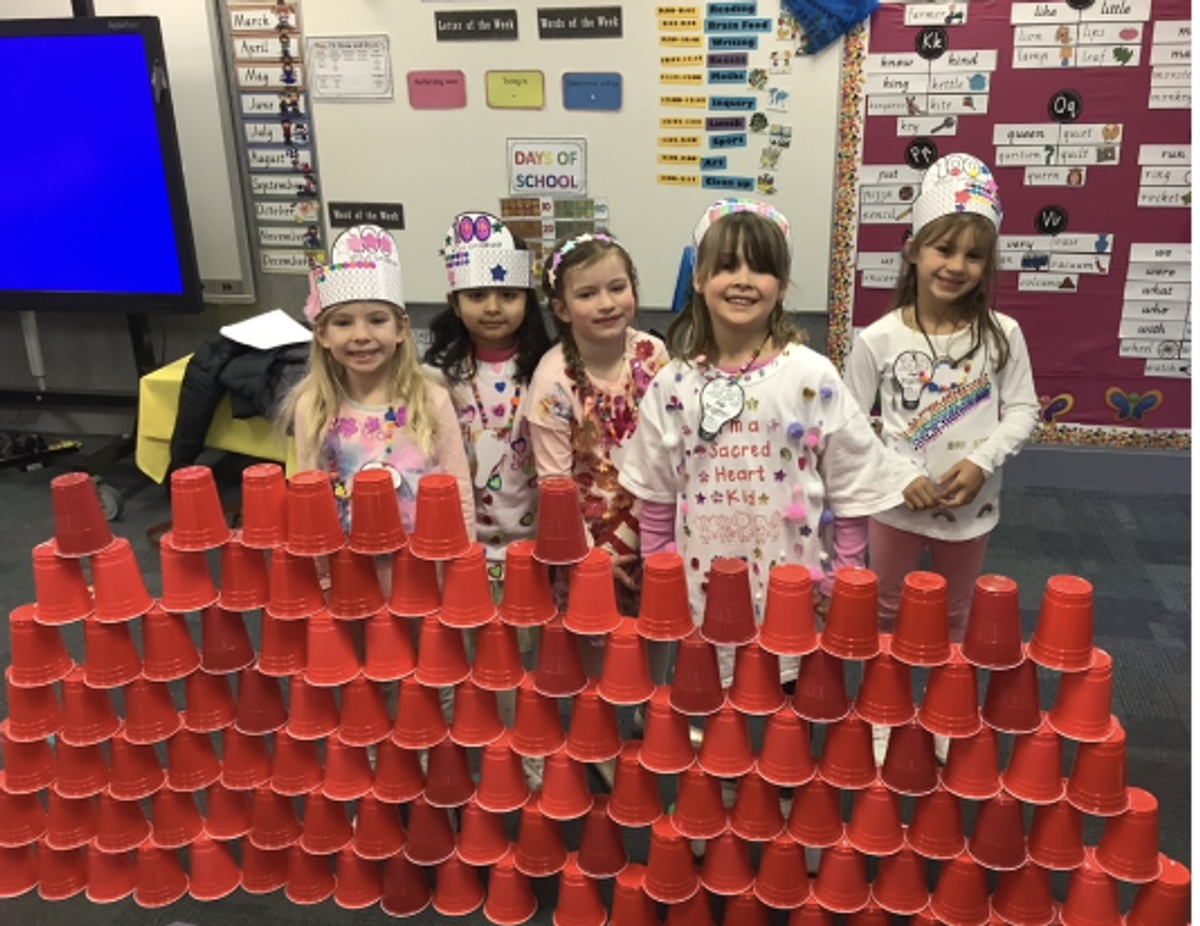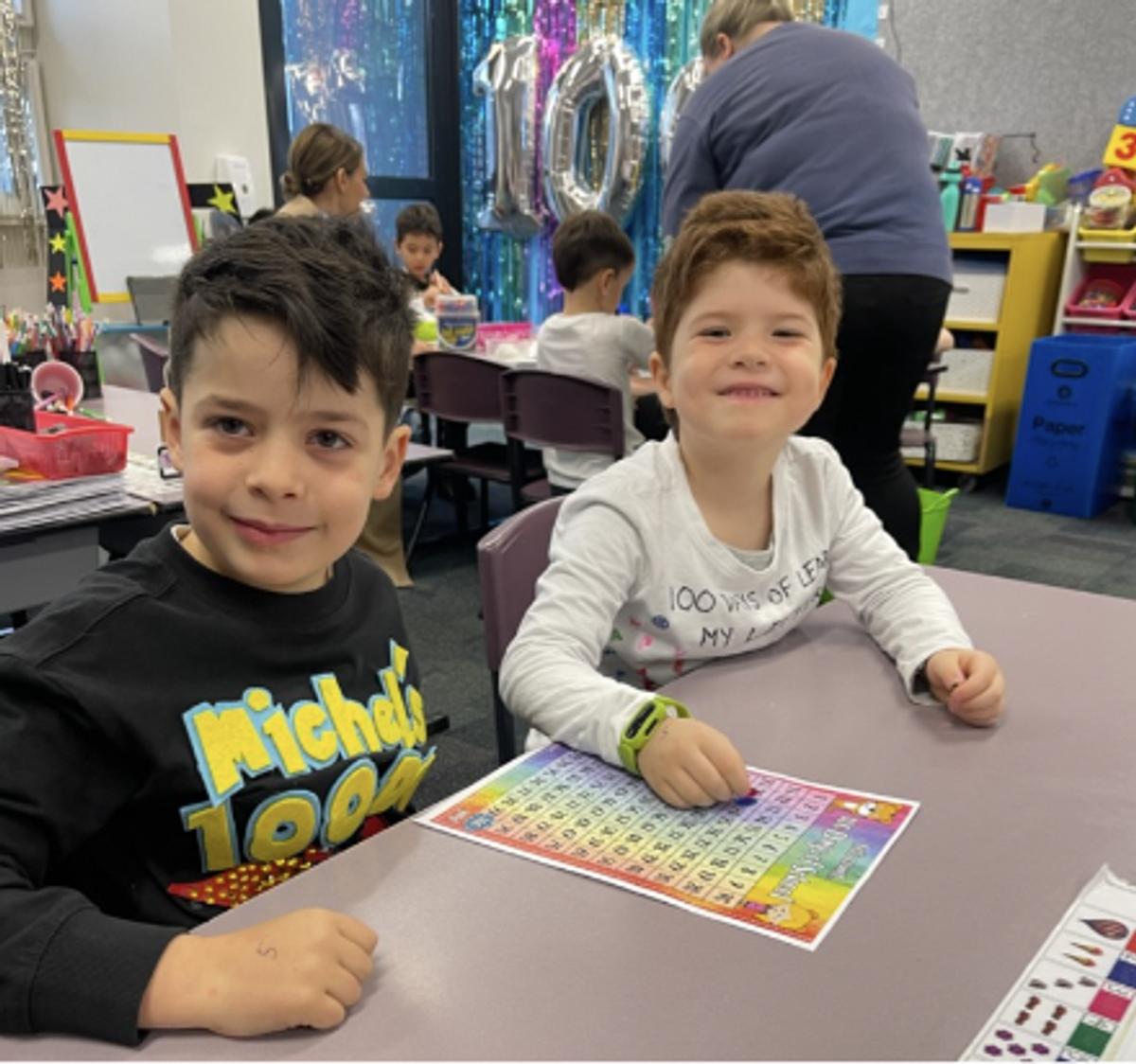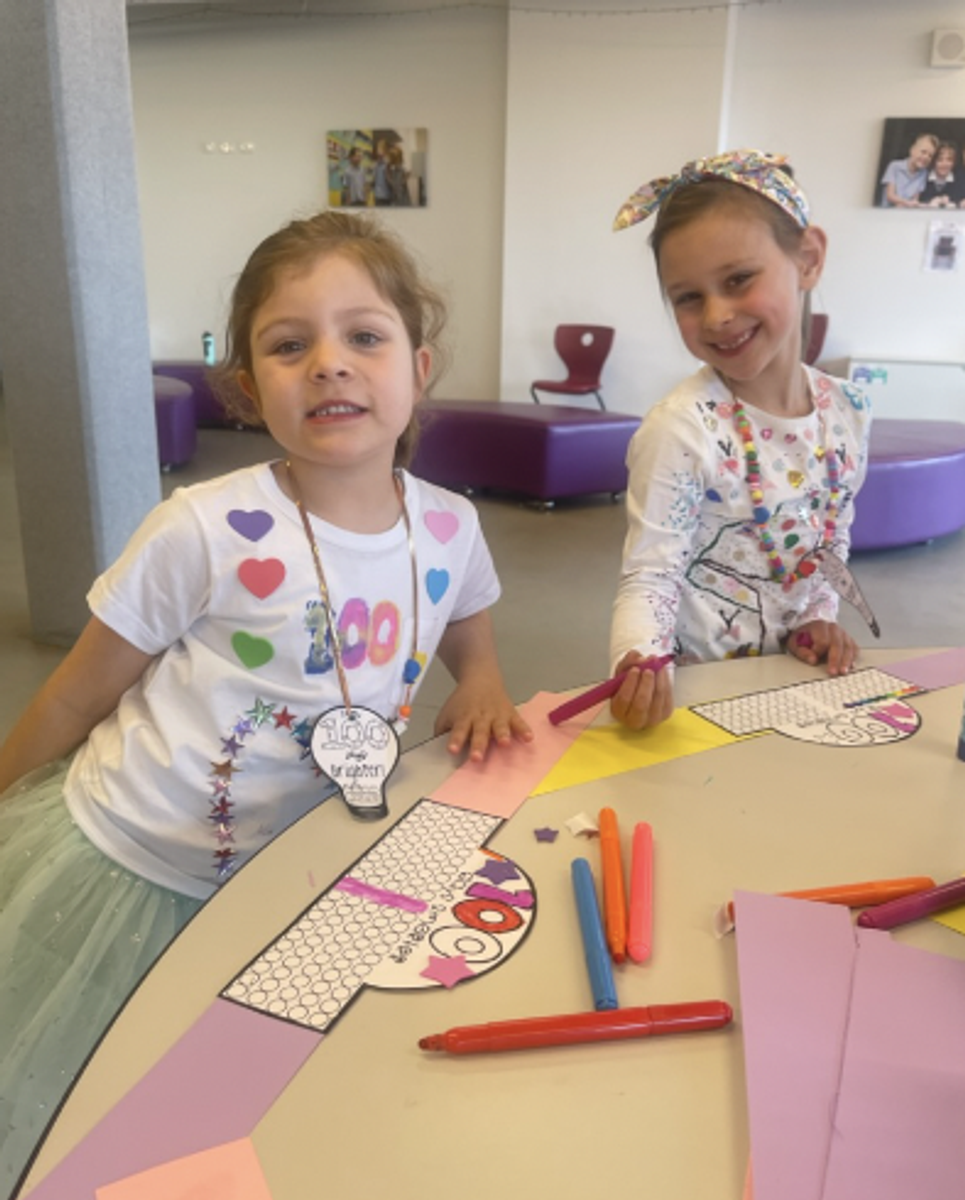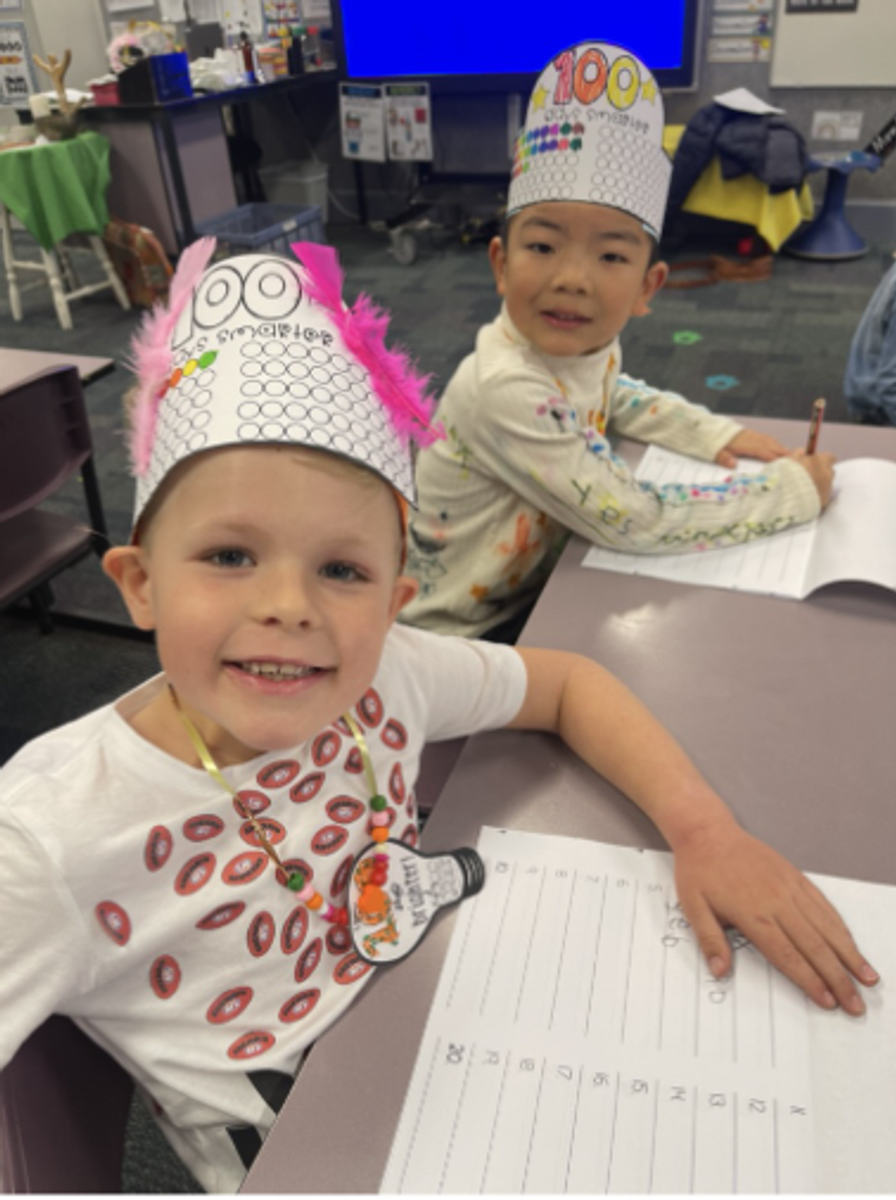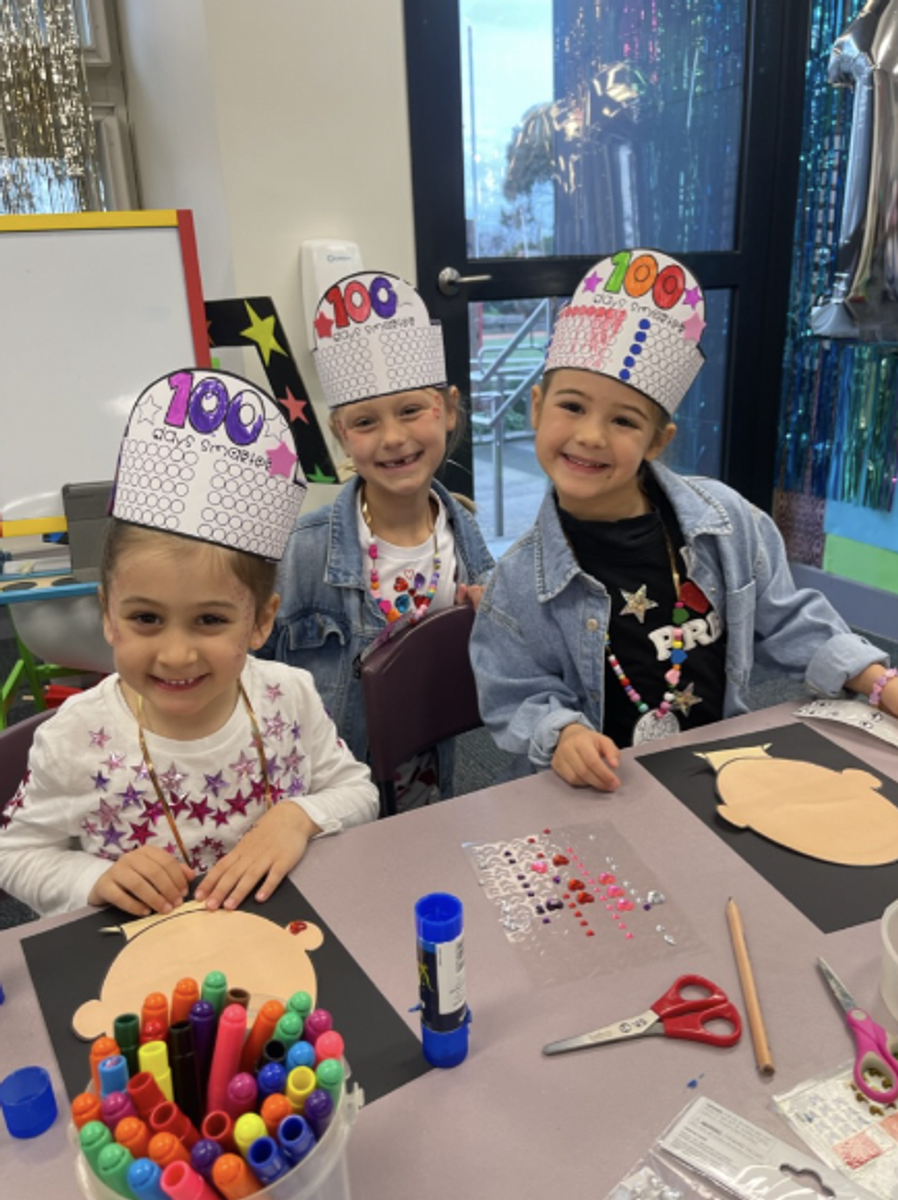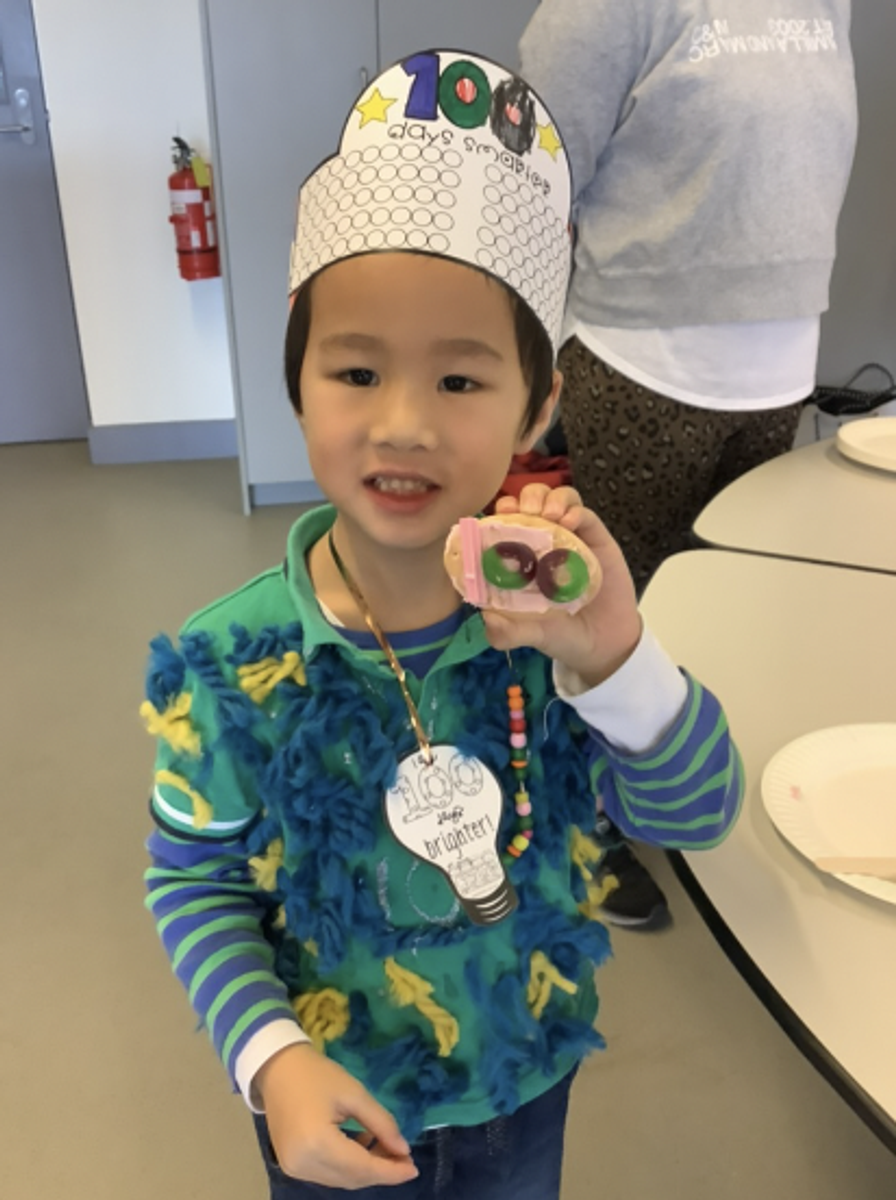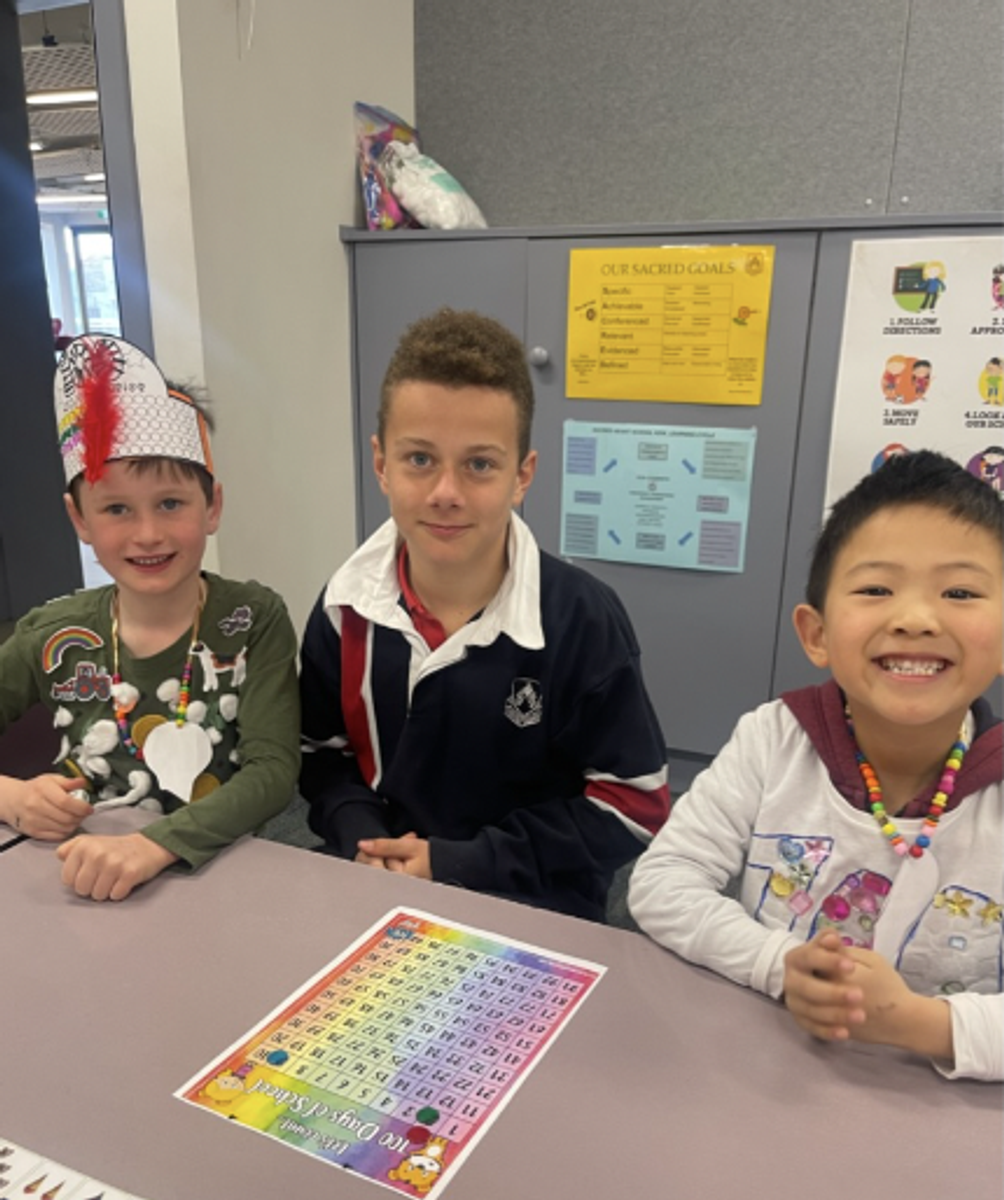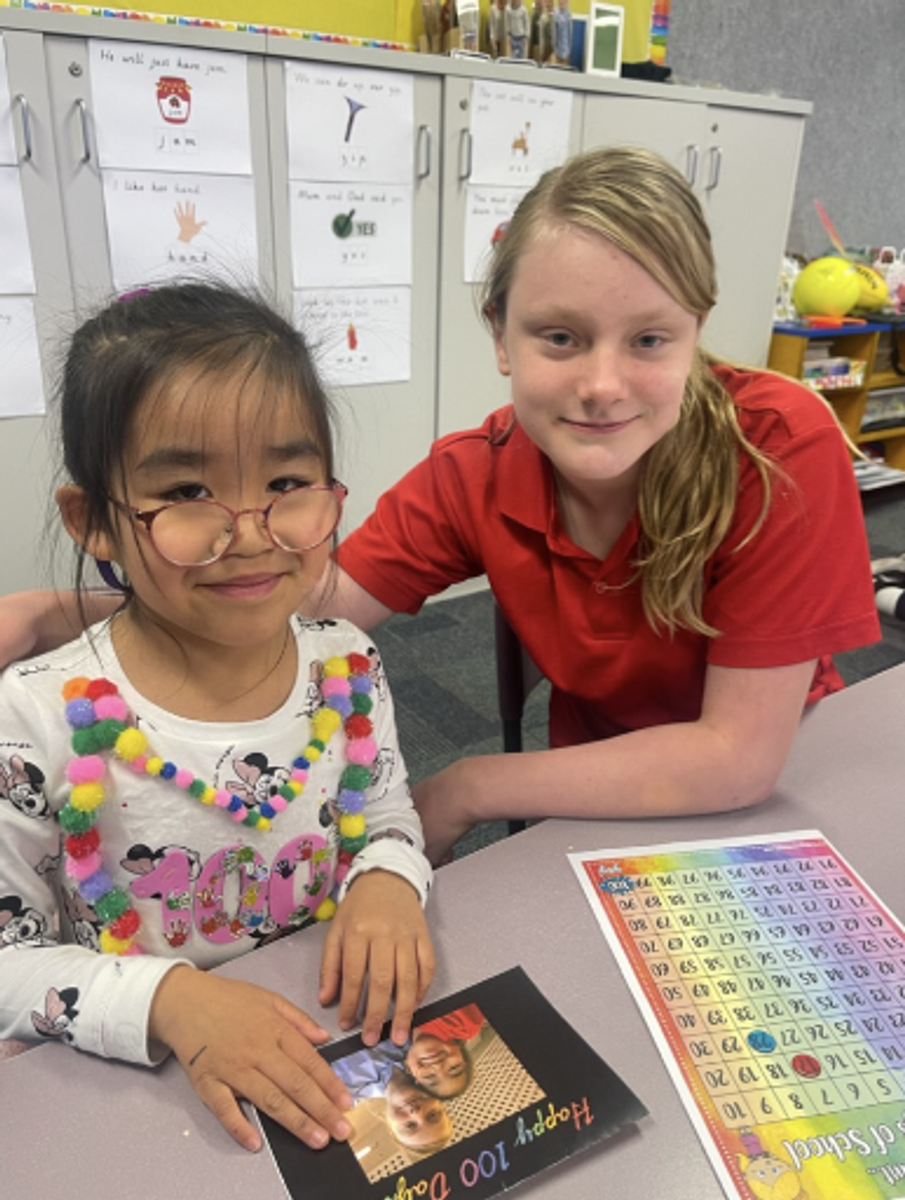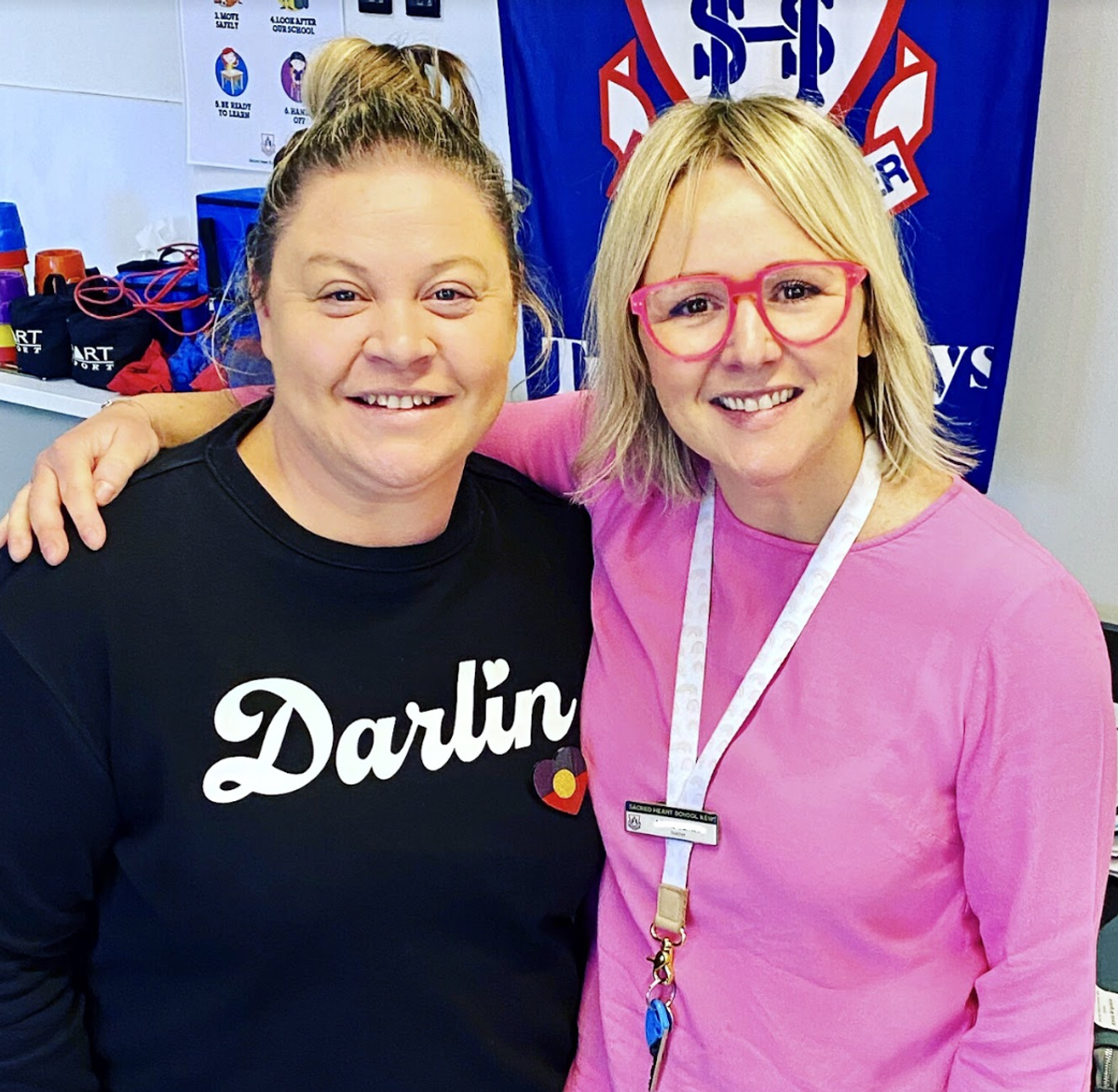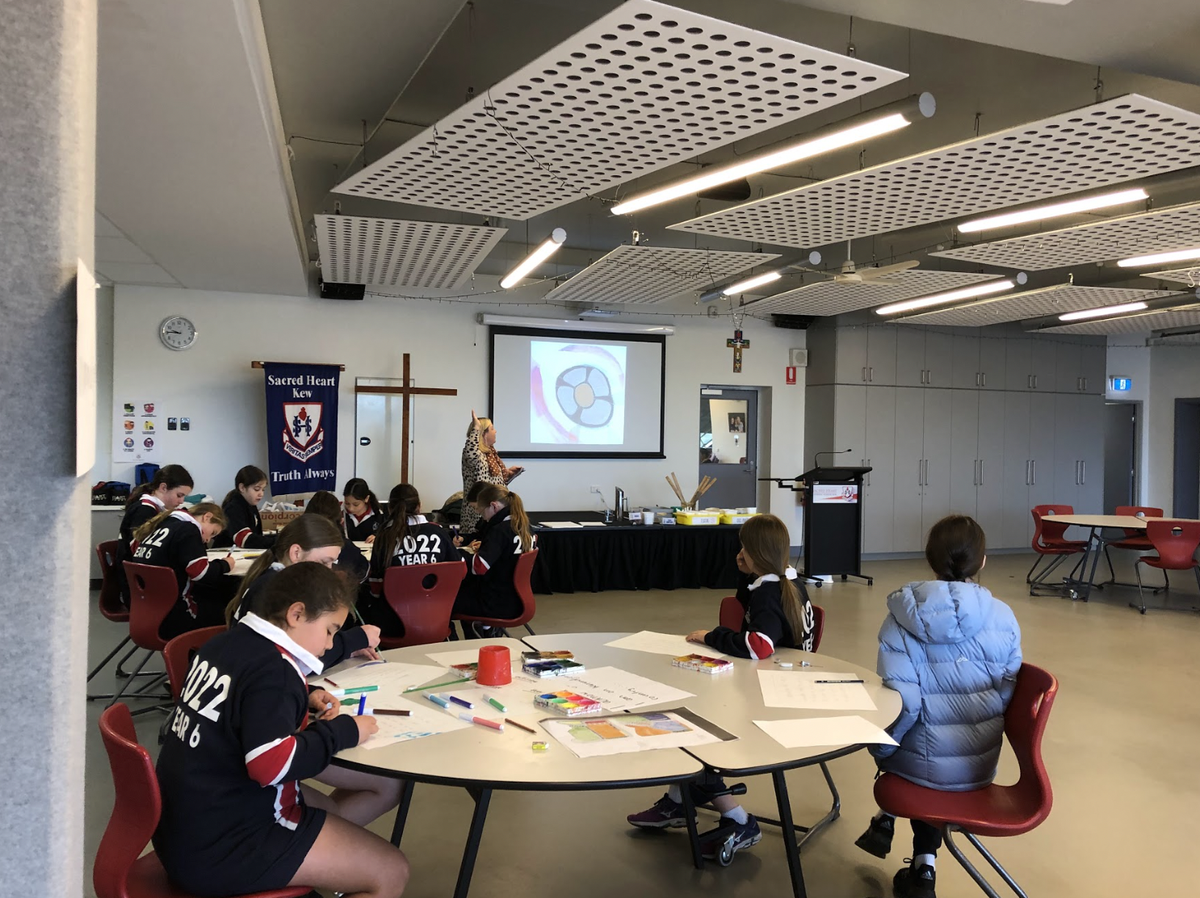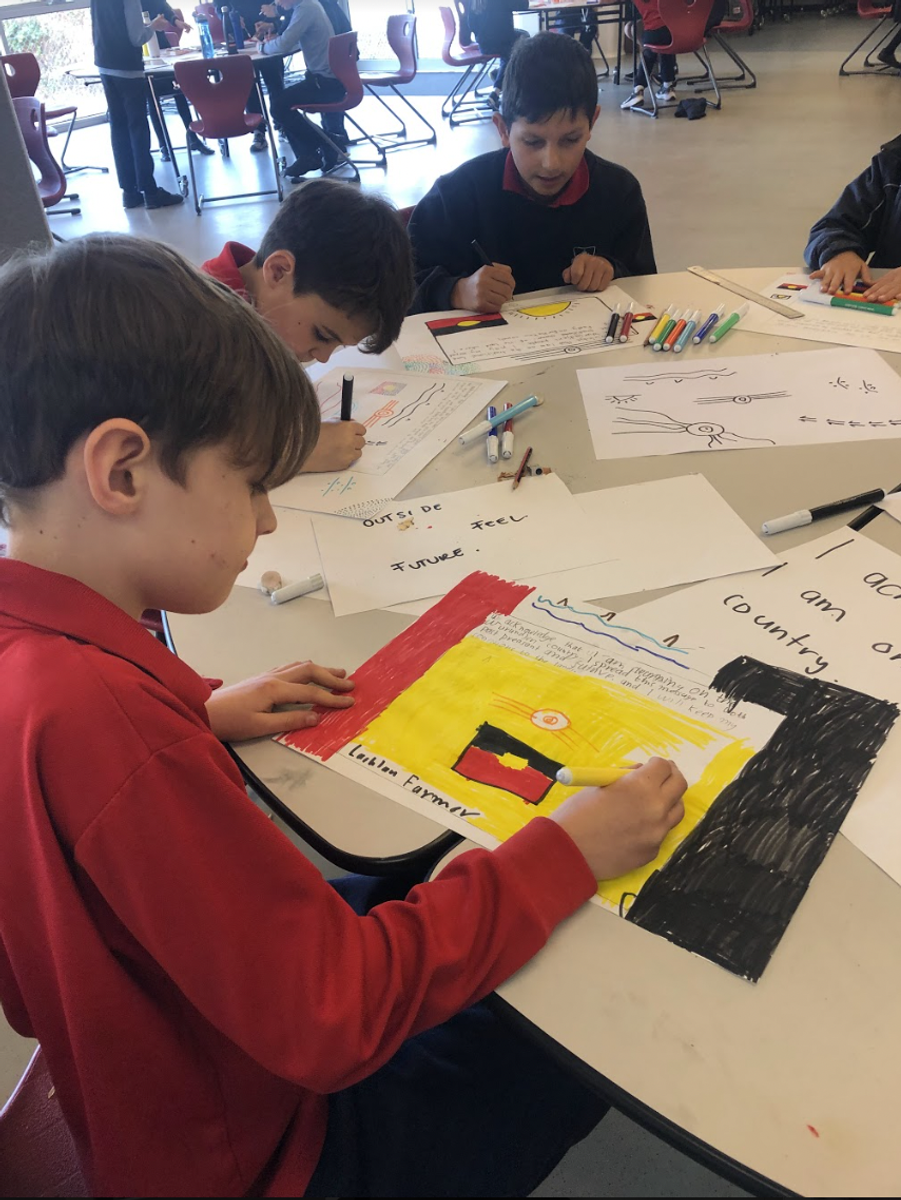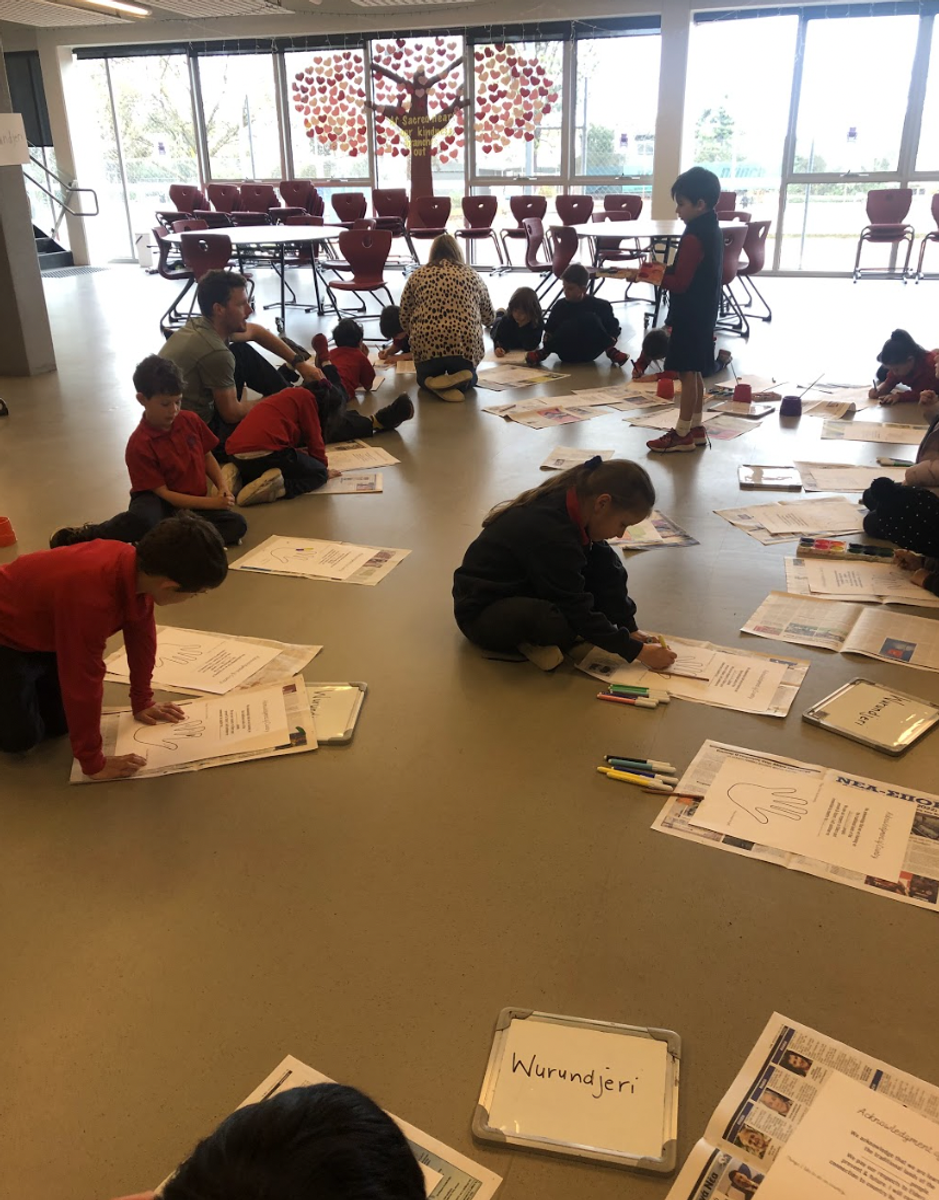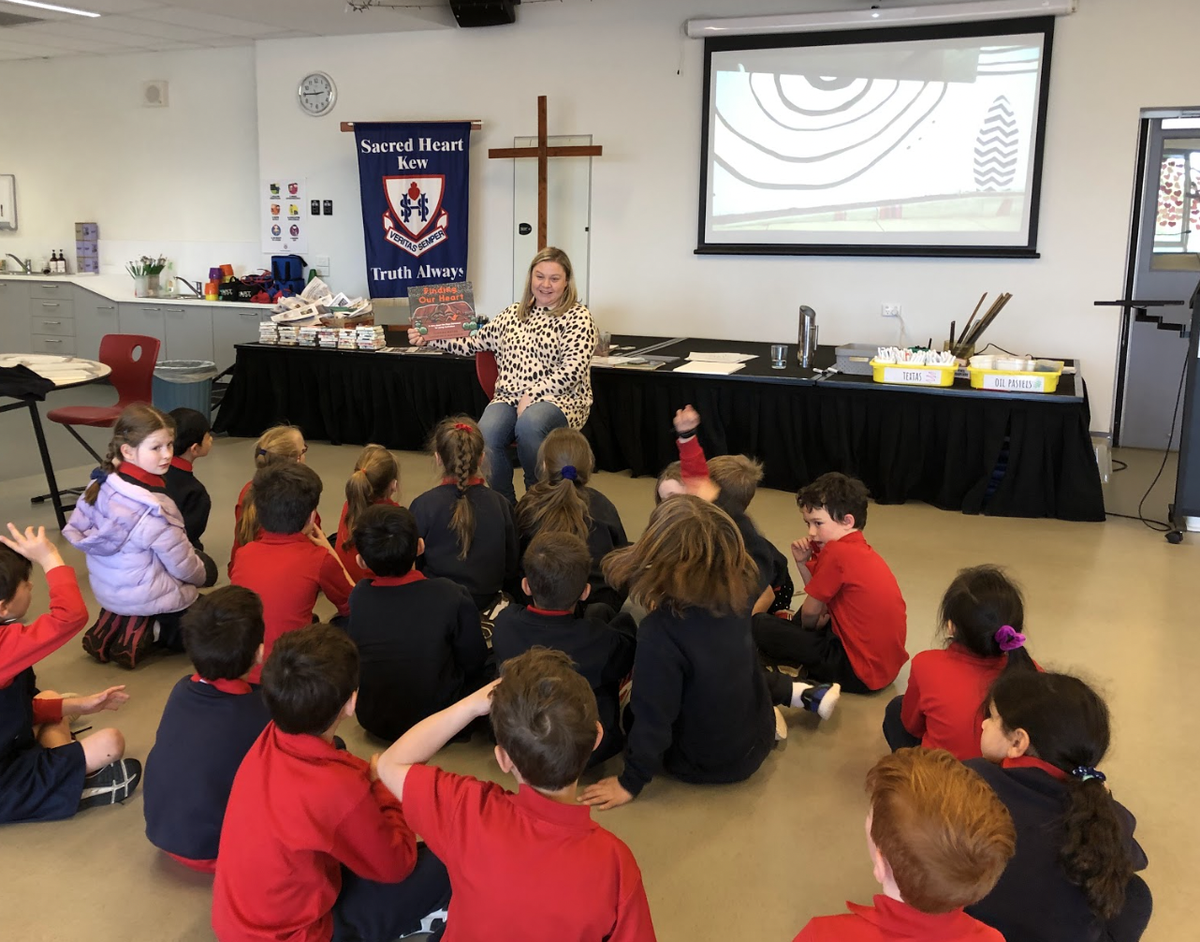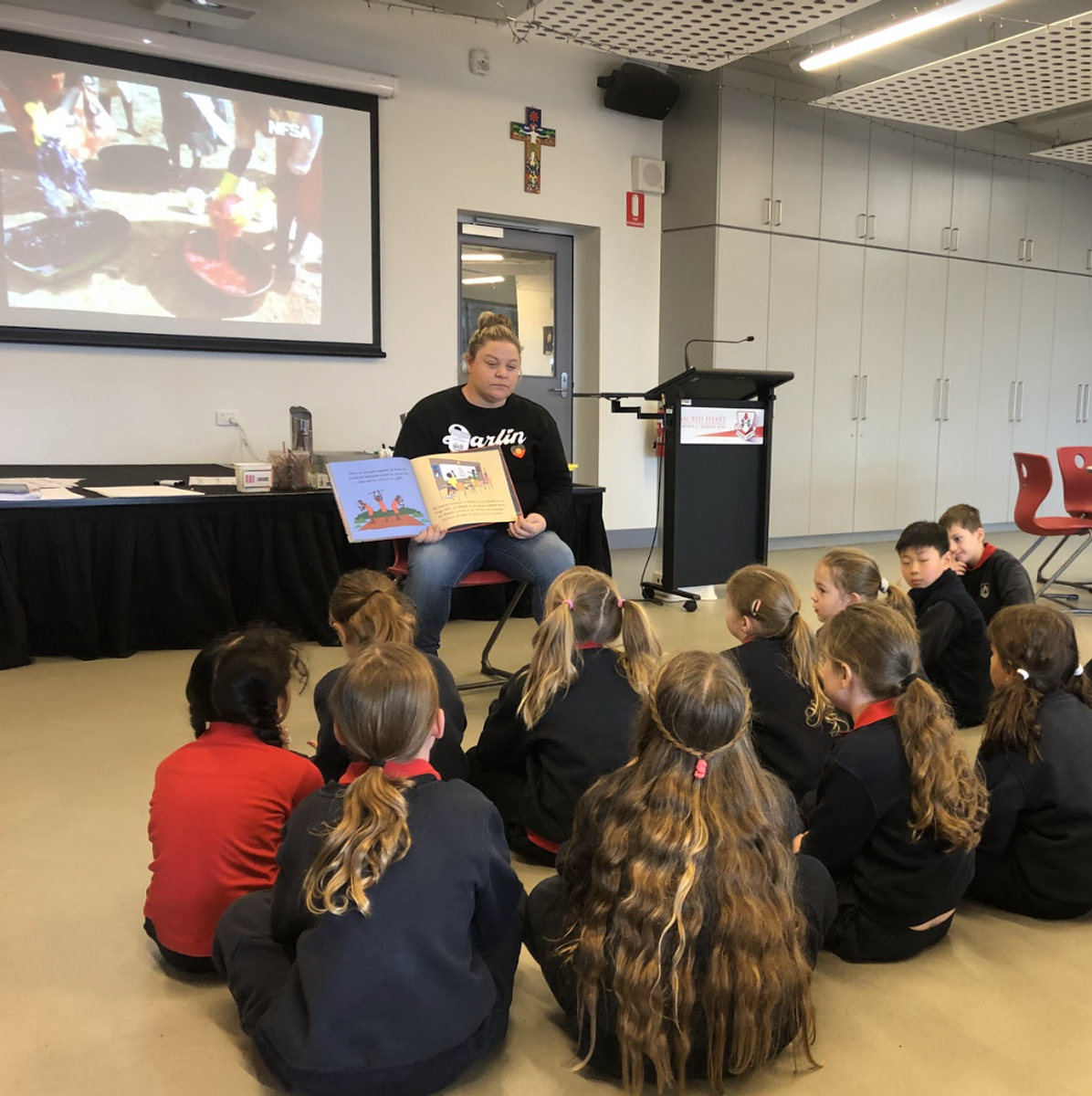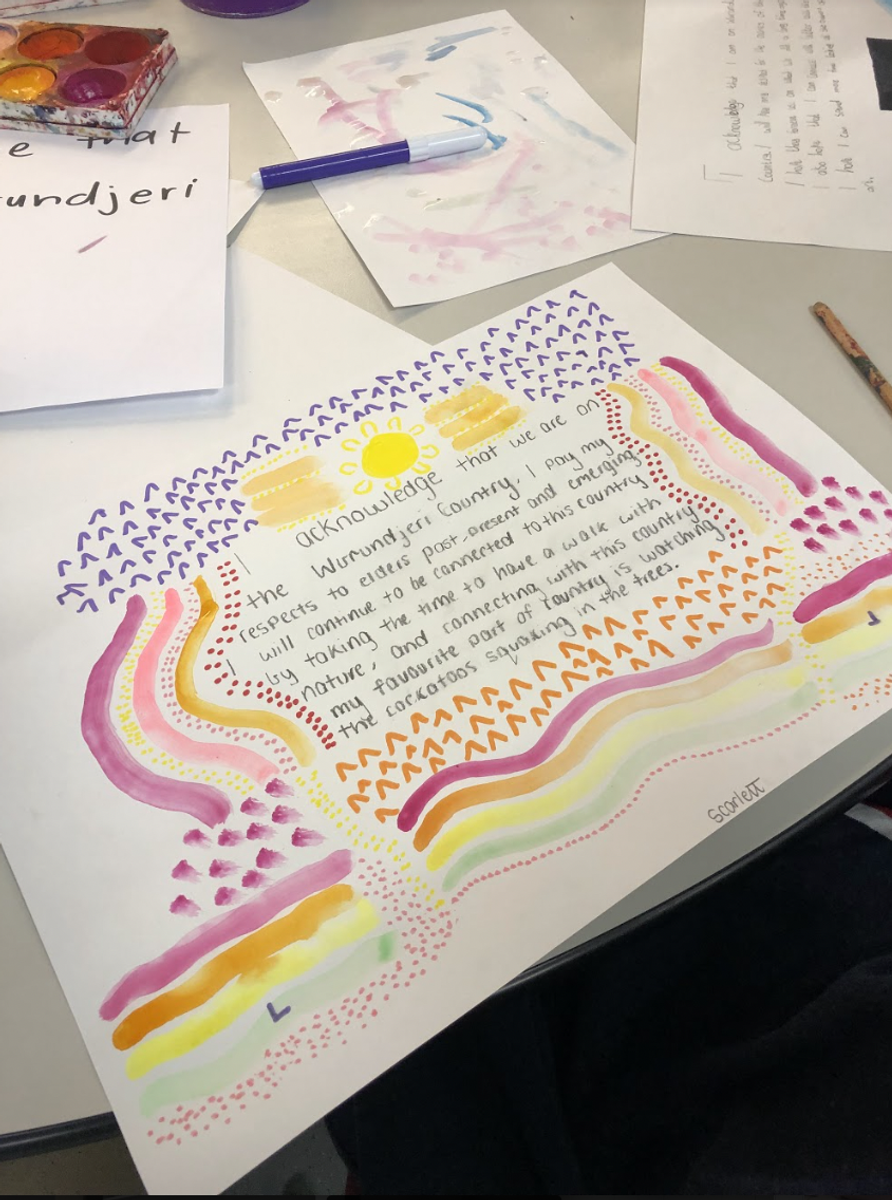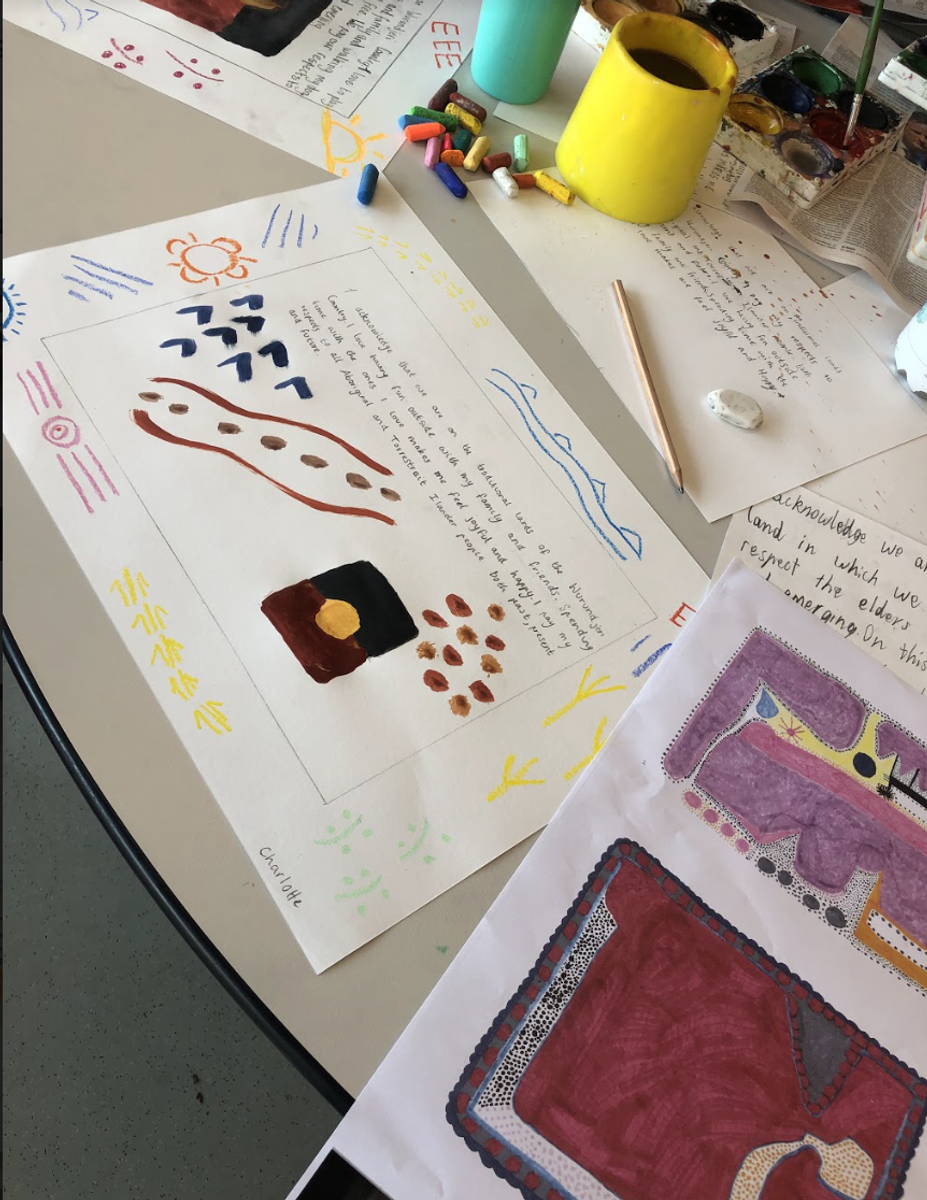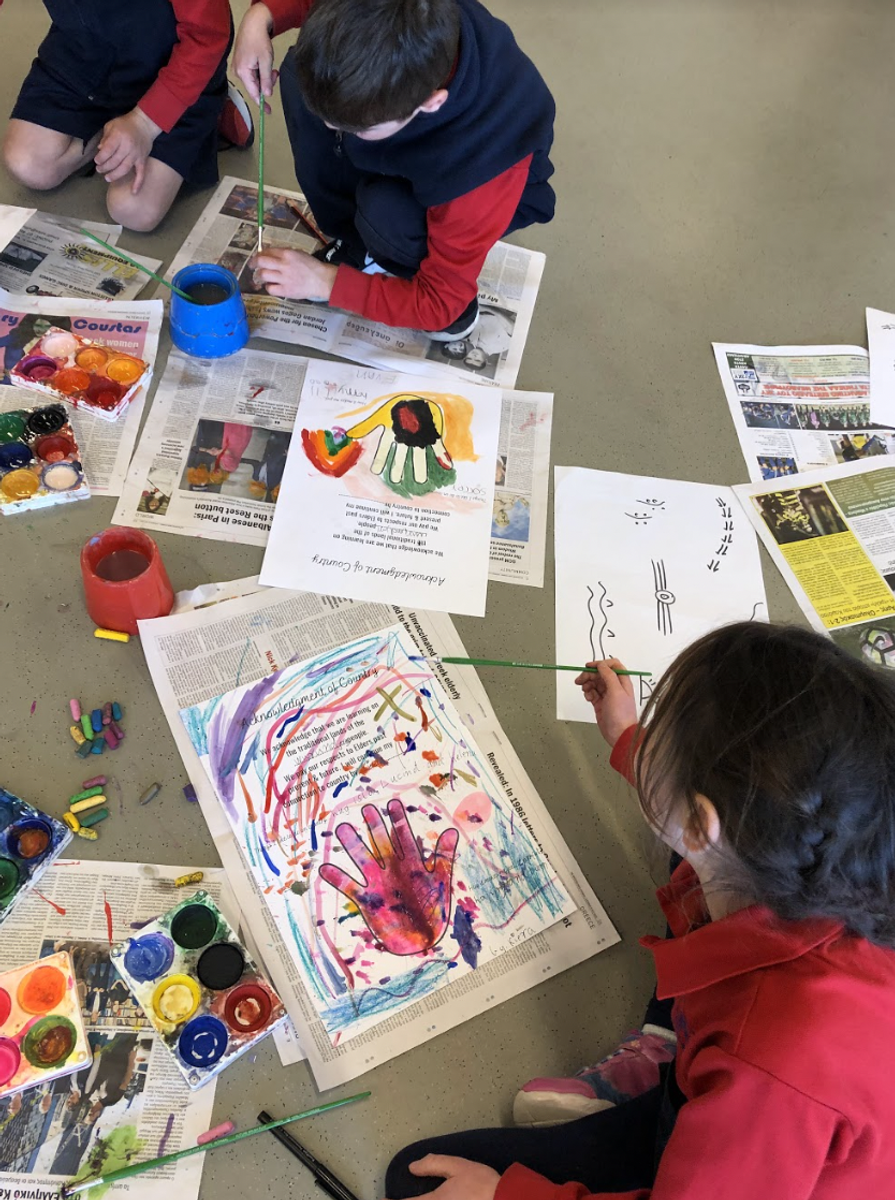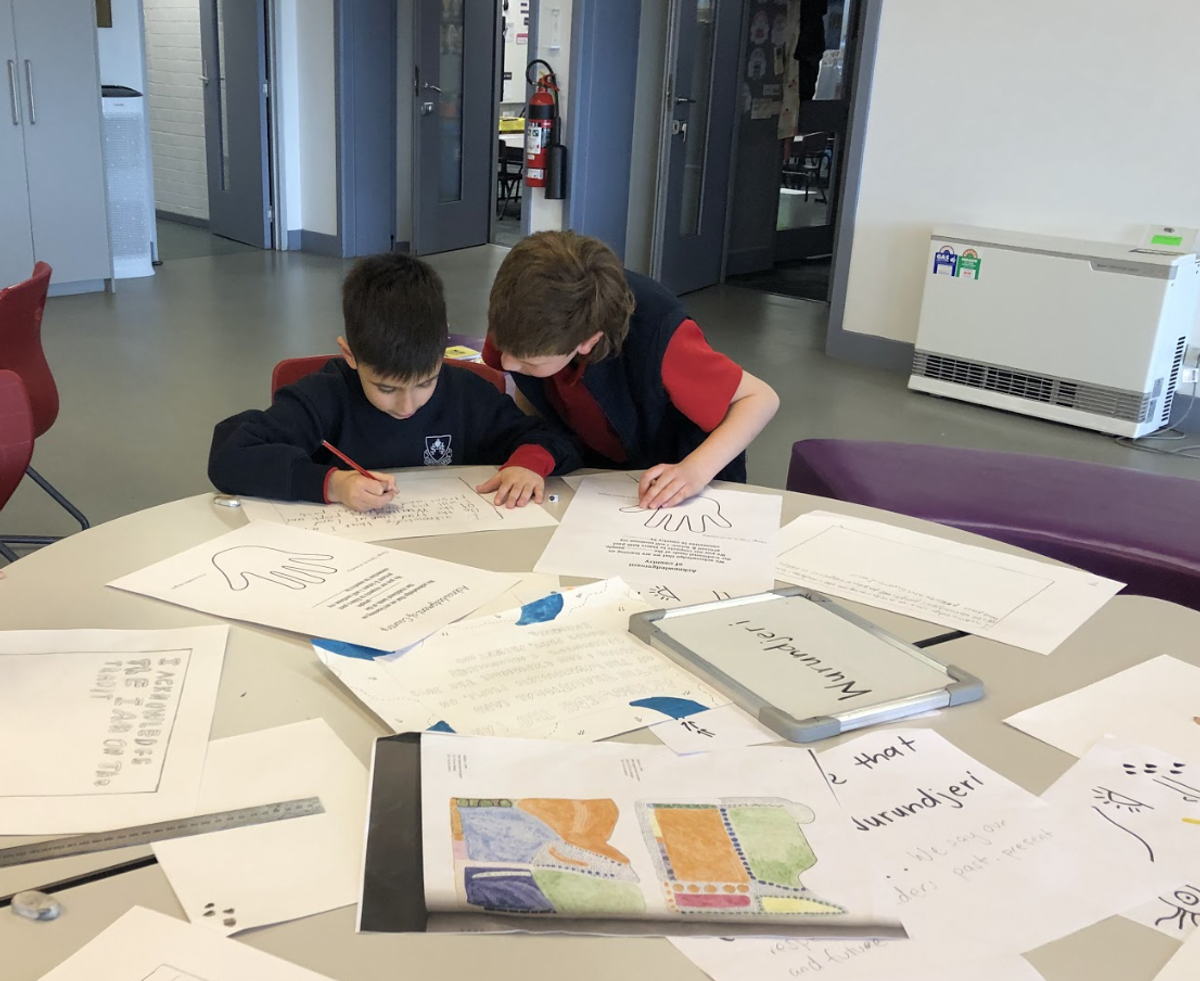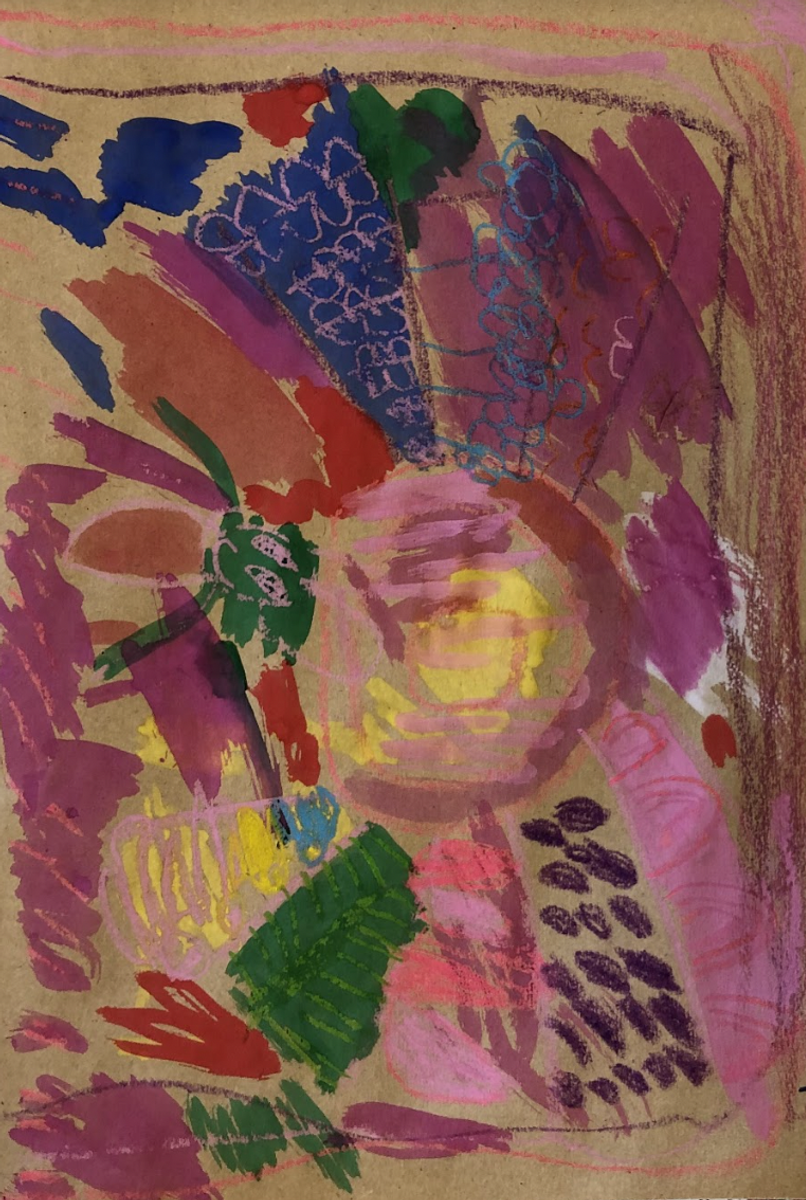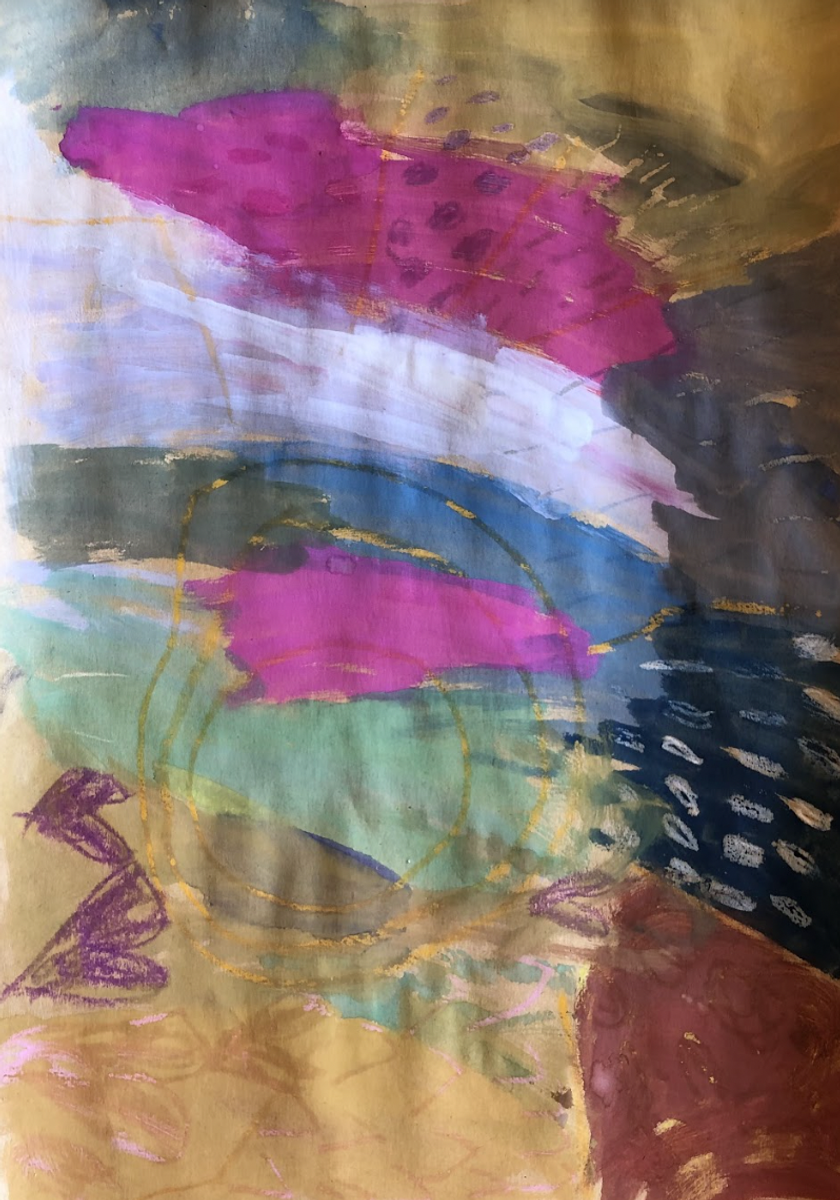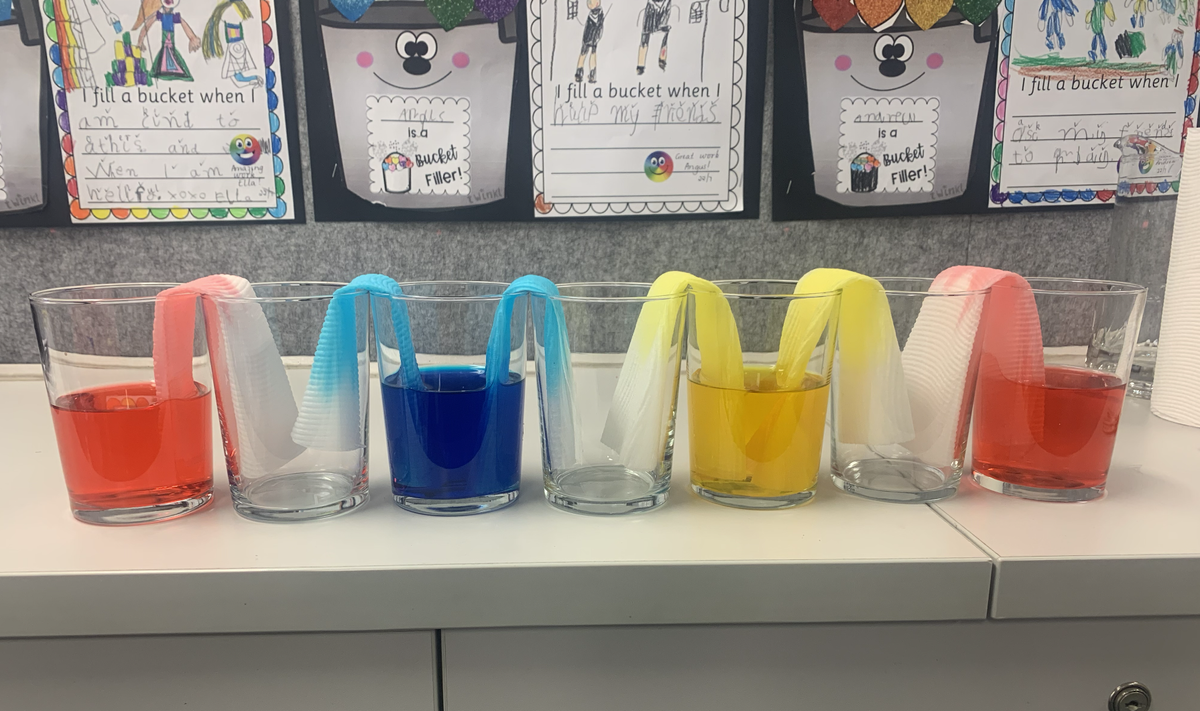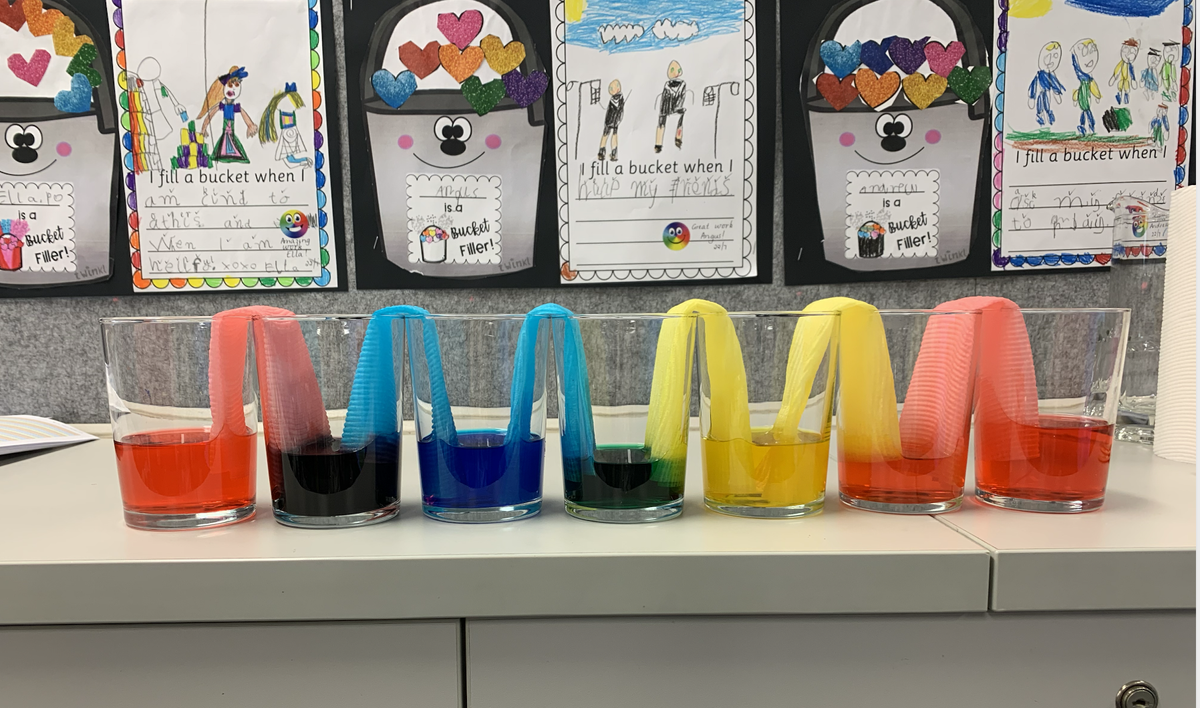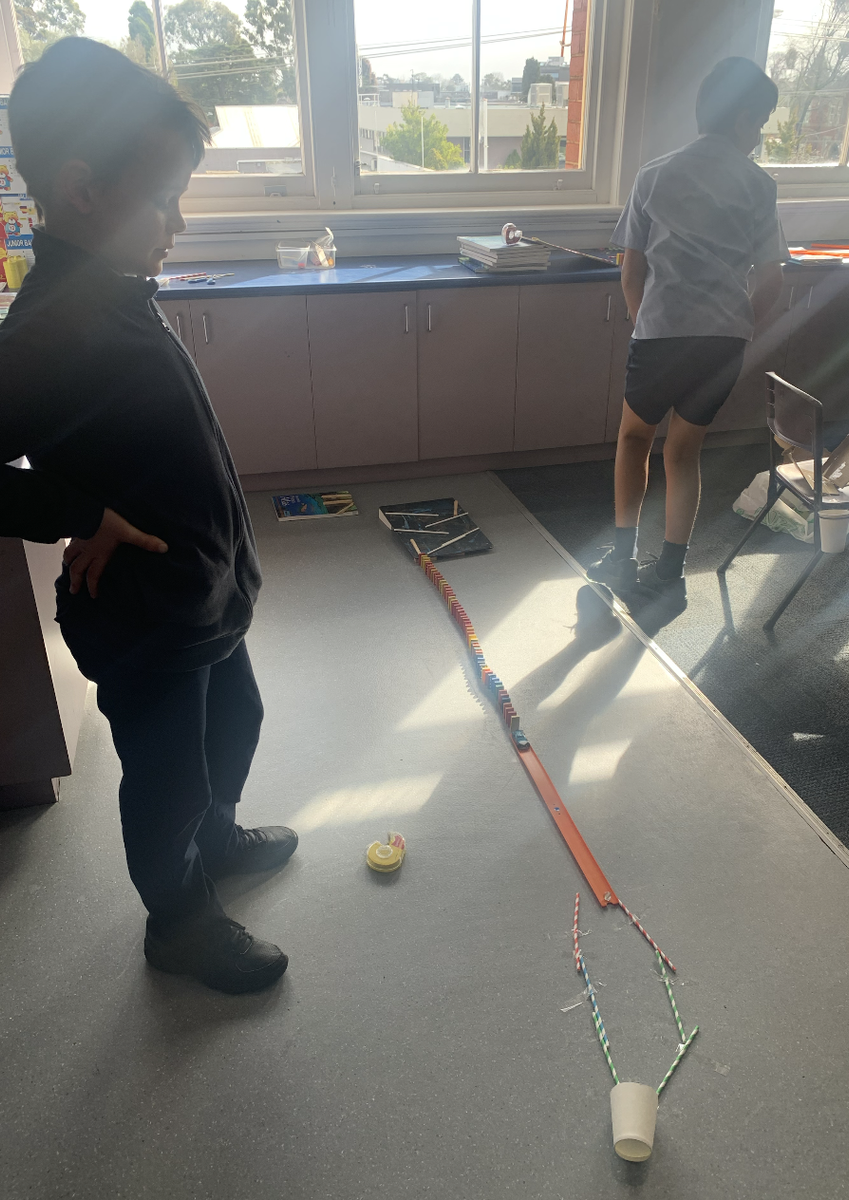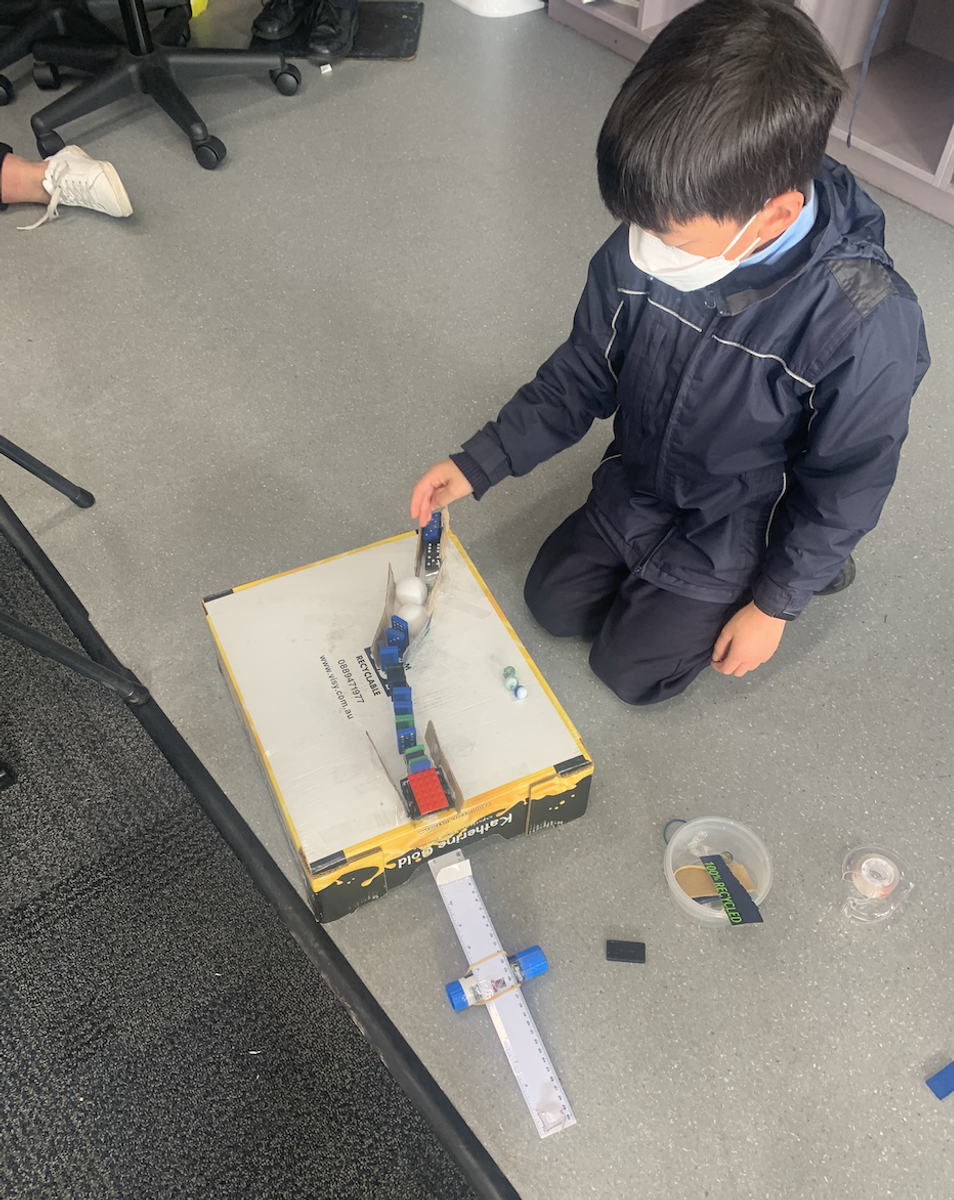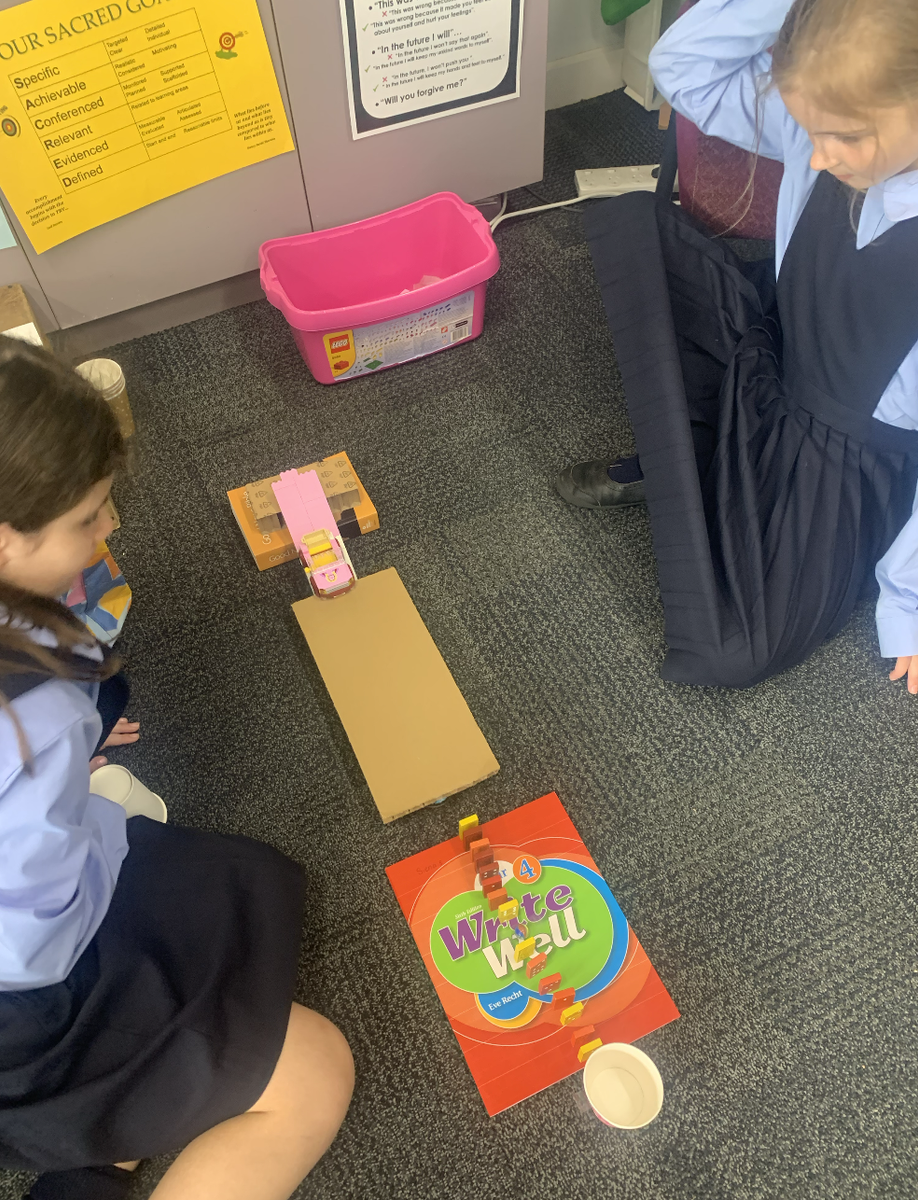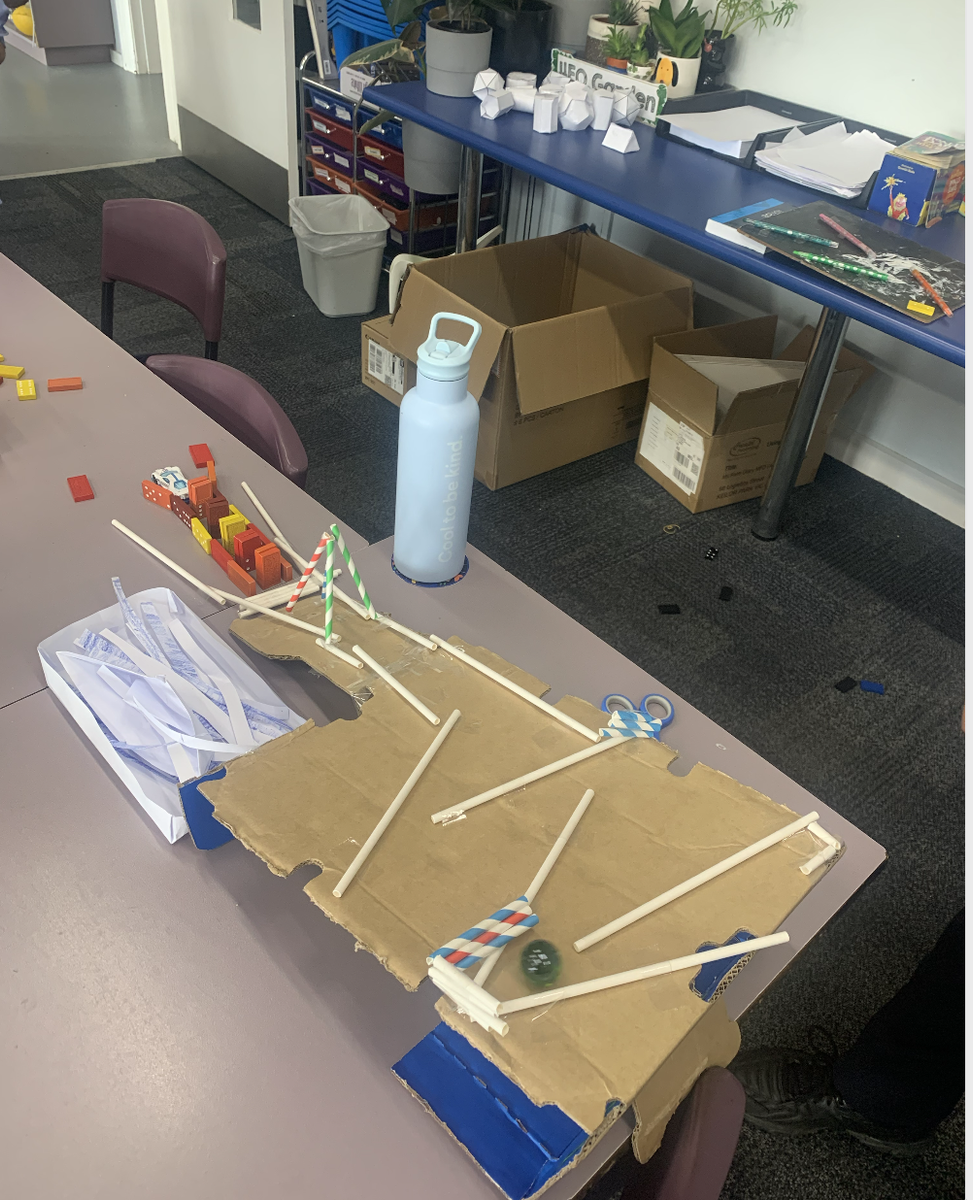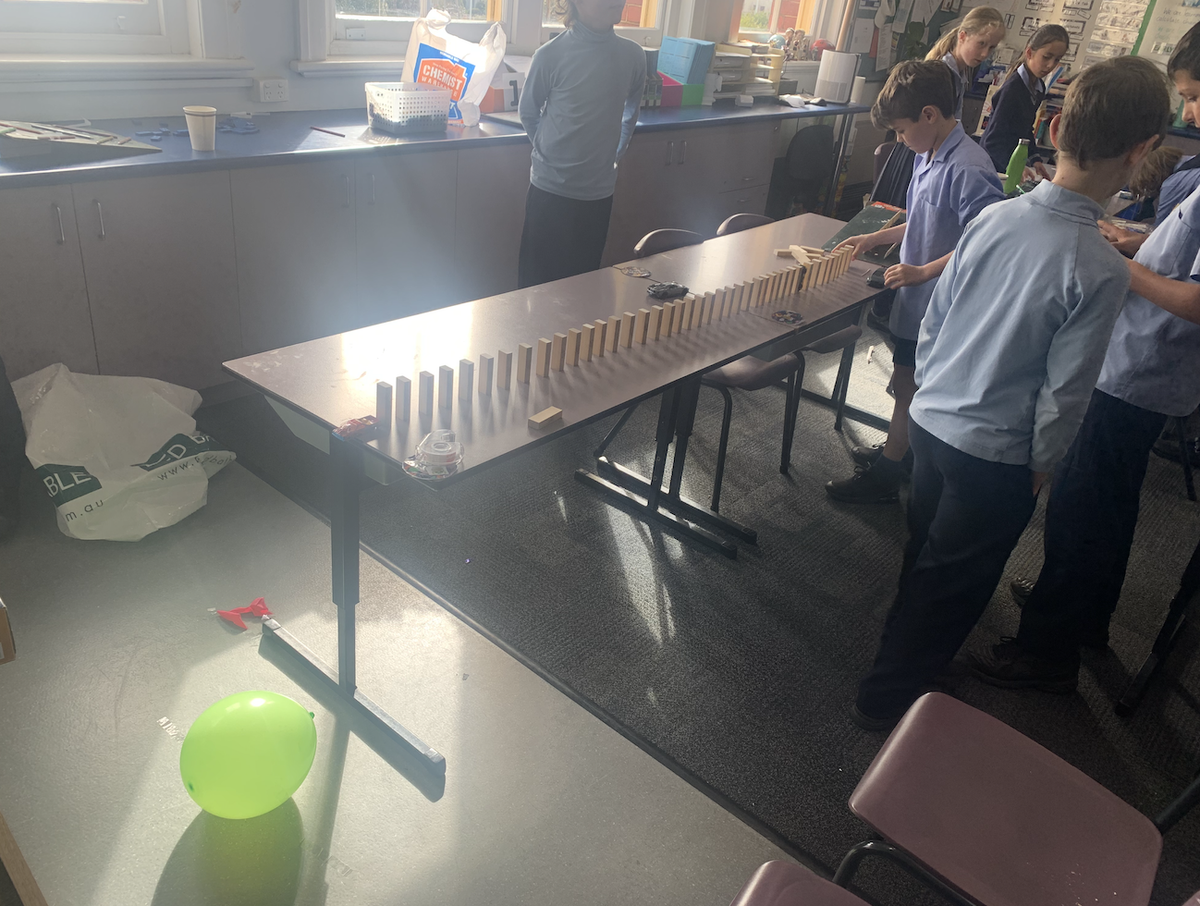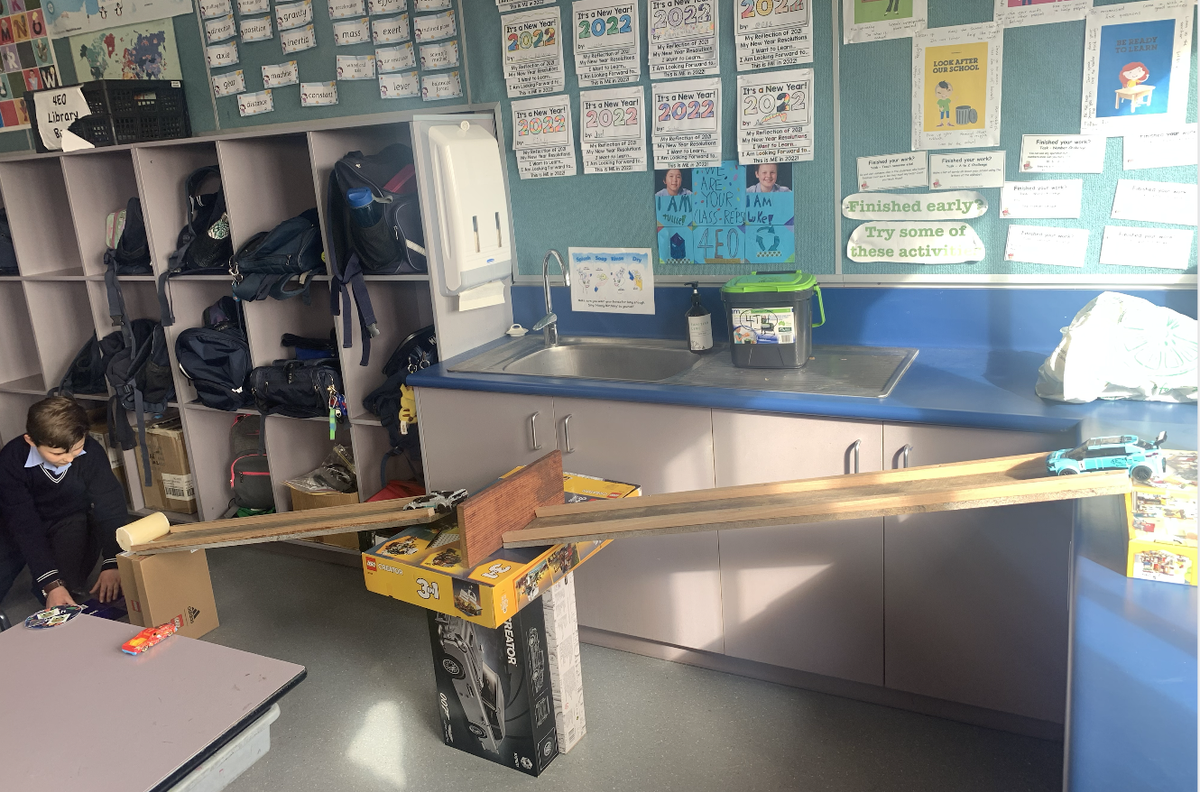Class News/Learning & Teaching

Prep News
On Friday 5 of August the Preps celebrated their 100th day of school at Sacred Heart Kew. What a fun day it was!
The Preps came into school in their colourful t-shirts that were decorated with 100 items.
The morning began with the Preps completing many fun activities that celebrated the milestone. The activities included racing their way to 100, building a tower using 100 cups, creating a picture of what they will look like when they reach 100 and writing out 100 words. The Preps also created a 100 days of school crown and necklace and enjoyed decorating a biscuit…. delicious!
The day was topped off with a special visit from their Grade 6 buddies.
Thank you to all the parents who assisted with the activities throughout the morning. The day simply could have not been as successful without the support.
Artist in Residence Workshops
This week, all Sacred Heart Kew students experienced the unique opportunity of creating and learning alongside artist in residence, Annie Brigdale. Annie is a proud Yorta Yorta woman who works with children to facilitate a meaningful and authentic understanding of Country, and its importance to First Nation peoples’ identity, culture and history. These critical understandings are developed through art making workshops that explore Indigenous perspectives. With Annie’s guidance, the whole school will create a visual representation of Acknowledgement of Country, in the form of a large-scale outdoor mural. Each child will have an opportunity to contribute their mark to this significant and exciting collaborative artwork.
Each year level participated in a 90 minute session with Annie this week, focusing on the following:
- Introduction and Acknowledgement of Country
- What is Country and why is it important to Aboriginal Culture
- What is Acknowledgement of Country and how do we do it meaningfully
- Art making:
Simple patterns
Simple patterns and marks
Simple animal drawing
Meeting place painting
Science Week Experiments
Prep - Make a Walking Rainbow
Nothing brightens up a day like making your own rainbow! For this colorful science experiment, kids get to create their own mini rainbow while learning about capillary action.
What you need:
- 7 wide mouth jars or drinking glasses
- food coloring (the 3 primary colors red, yellow, and blue)
- water
- scissors
- paper towel
What to do:
- Arrange the 7 jars in a line.
- Fill every other jar starting with the first about 3/4 of the way up with water.
- Add the food colouring. If you have the 7 jars arranged in a line, add a healthy squirt of red to the first and the last jar, yellow to the third jar, and blue to the fifth jar. Only the jars with water get the food coloring. So: red, skip a jar, yellow, skip a jar, blue, skip a jar, then red again.
- Fold 6 paper towels in half and then in half again so you have long, thin paper towels. Really crease those folds! Next, fold one of the long paper towels in half length-wise so it's half the size. Depending on how tall your jars or glasses are, you'll want to cut a good inch or inch and a half off the end with scissors. You don't want the paper towels to stick up in the air too much. Repeat that step 5 more times with each of the remaining paper towels.
- Put one end of a folded paper towel in the first jar and the other end in the second jar. Take another and put one end in the second jar and the other end in the third jar. Repeat until you have a zigzag of paper towels going from the first jar to the last.
What happens:
The coloured water is travelling up the narrow paper towel against gravity, using a process called capillary action. The water is pulled up through tiny gaps between the fibers in the paper towel, wicking each colour up out of one jar and down into the next. The once empty jars are now filling up with the 2 colours from the jars on each side and mixing!
Design and Technology
As part of their Inquiry Unit, Force and Energy, the Year 4 students designed and developed their own Rube Goldberg Machine. Rube Goldberg became famous for imagining and designing very complicated ways to do simple tasks. He combined the six simple machines (the inclined plane, wheel and axle, pulley, lever, wedge, screw) to create more complex machines that relied upon a series of chain reactions to get things done.
Students had to follow the following design brief:
- Your task is to design and build a simple Rube Goldberg Machine that has a minimum of four chain reactions and involve at least three different Simple Machines.
- Remember the six Simple Machines are: the inclined plane, wheel and axle, pulley, lever, wedge, screw
- Some ideas: burst a balloon; get a ball into a cup; roll a car past a certain point; knock something over
- Get your thinking caps on. You can use materials that you have at home. Go through the toy cupboard and games cupboard and look for things that might be useful. Lego is allowed. Other possible materials can be: marbles, ping pong balls, hot wheels cars, dominoes, cardboard boxes, toilet rolls/cardboard rolls, balloons, bottle caps, string/rope, straws, skewers, weights, rubber bands, tennis balls, hair ties
